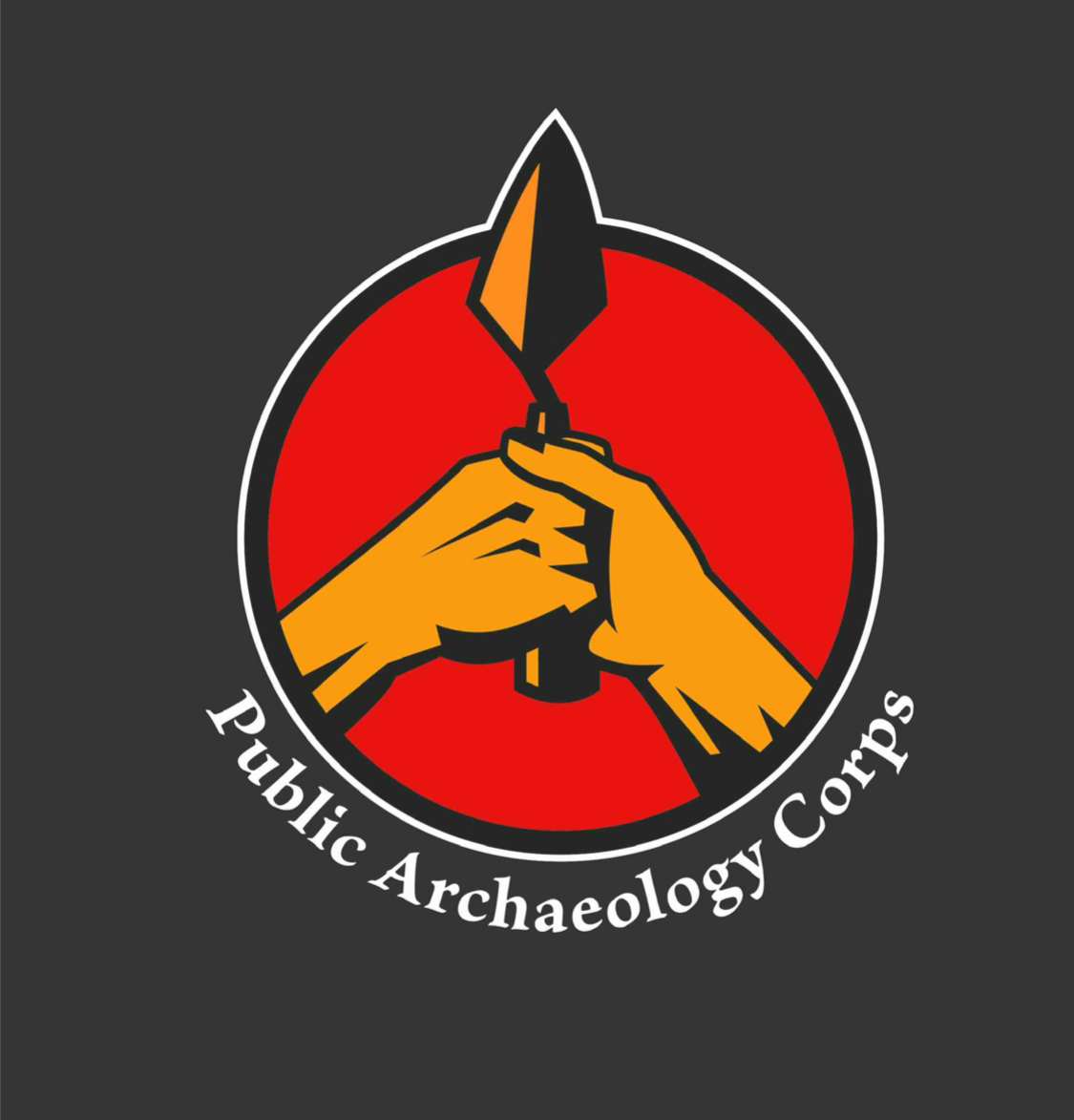Looking Into The History
Public Archaeology Corps | Wilmington, NC
David Norris, Public Archaeology Corps Historian has been looking into the history of our dig site and the neighborhood. Wilmington’s surviving historic newspapers: New Hanover Deed Records and Probate and Will Books; Old maps; and other historical documents. These help provide context for the artifacts we are finding.
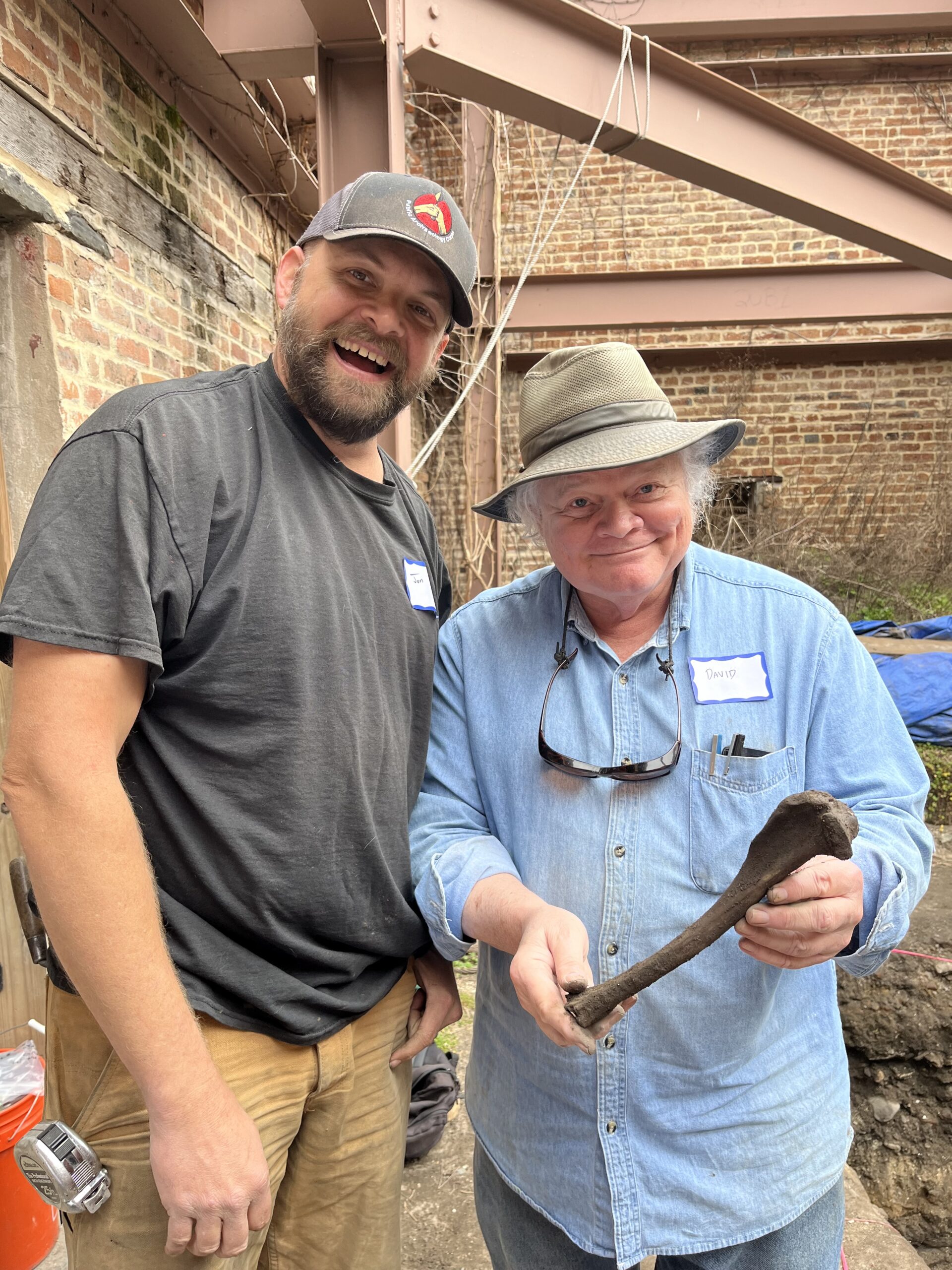
1
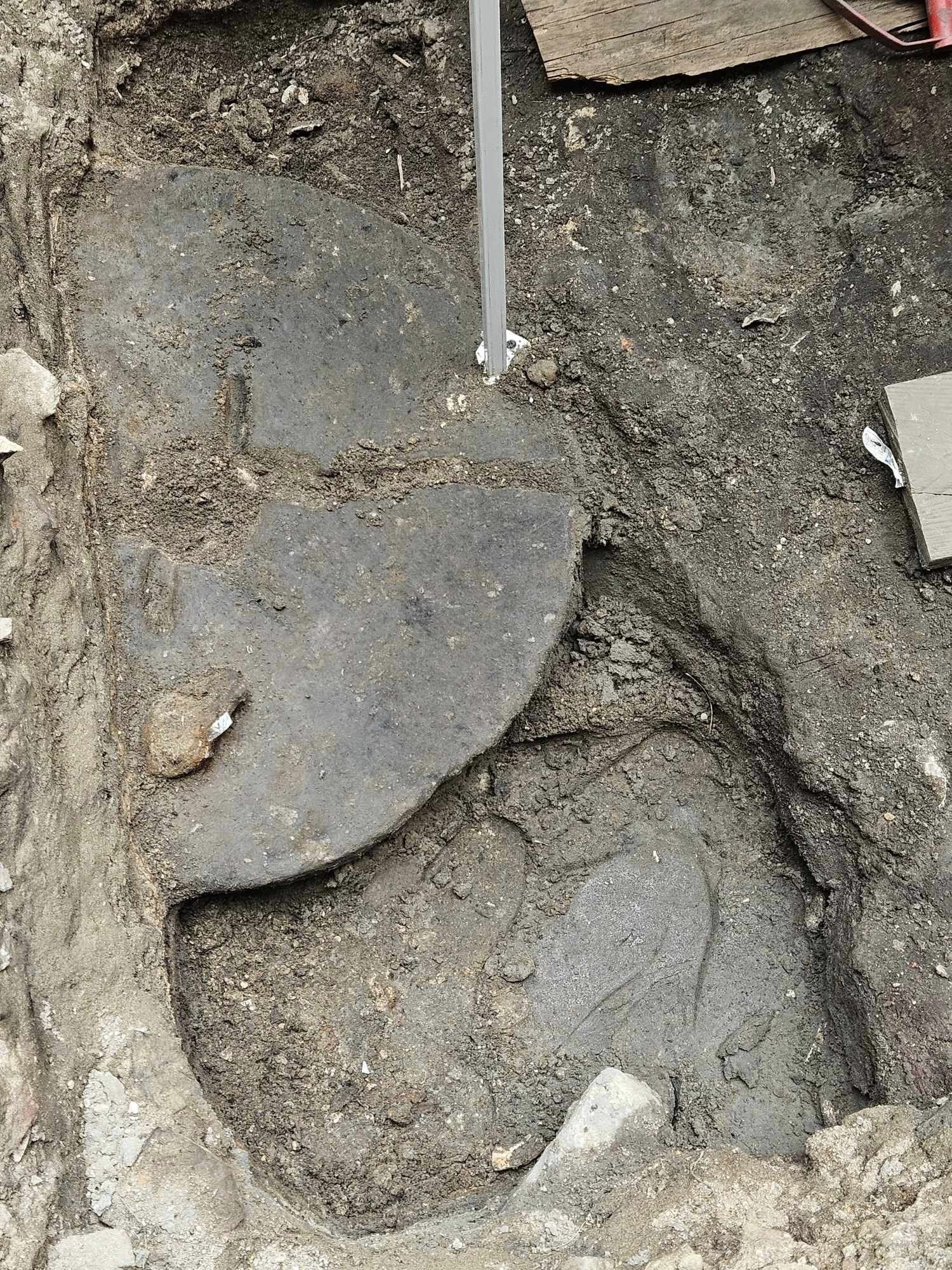
Millstone photo; thanks to Lyle Bass of the Public Archaeology Corps.
2
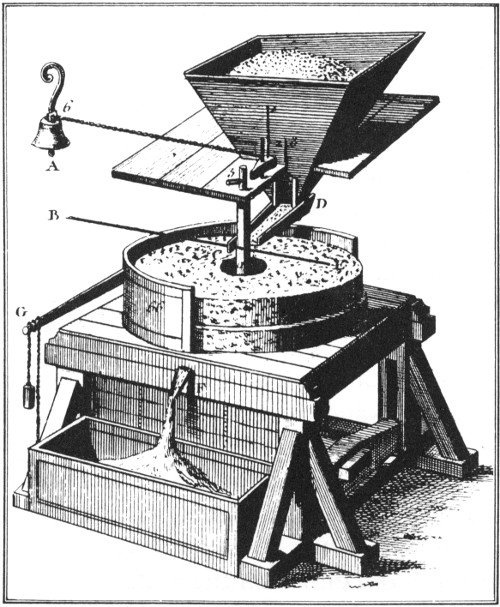
Millstones at work; diagram from Thomas K. Ford, “The Miller in Eighteenth-Century Virginia”. https://www.gutenberg.org/files/58036/58036-h/58036-h.htm
3
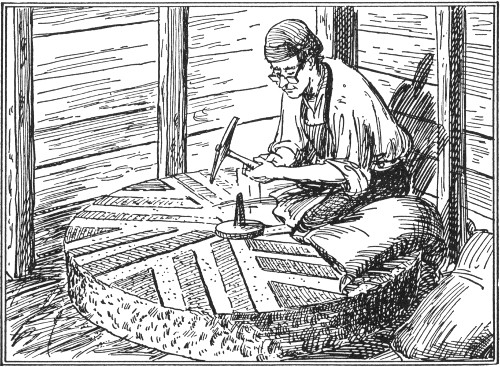
Redressing a millstone, from “The Miller in Eighteenth-Century Virginia”.
4
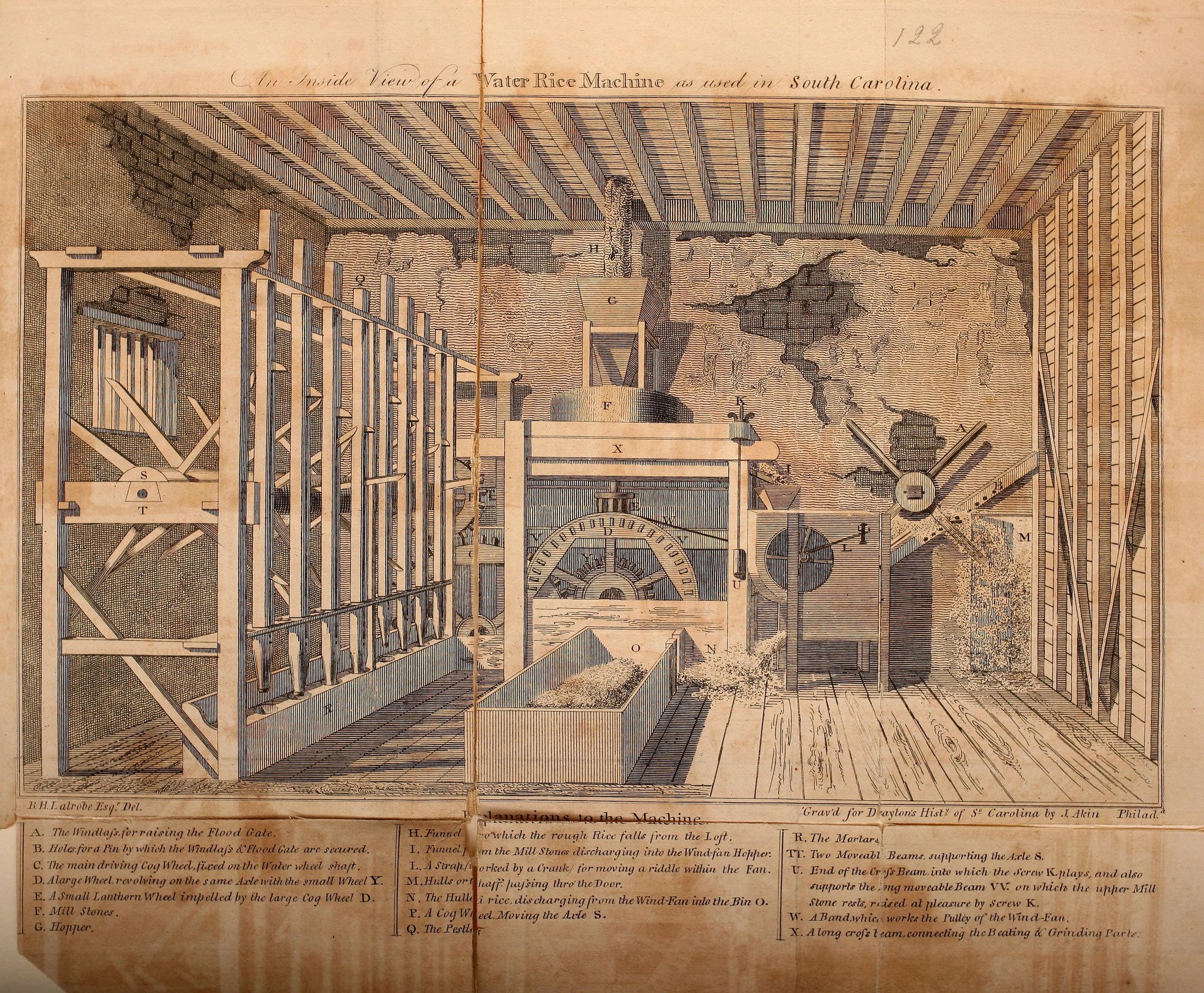
Interior of a rice mill, from John Drayton, “A View of South Carolina”, 1802.
5
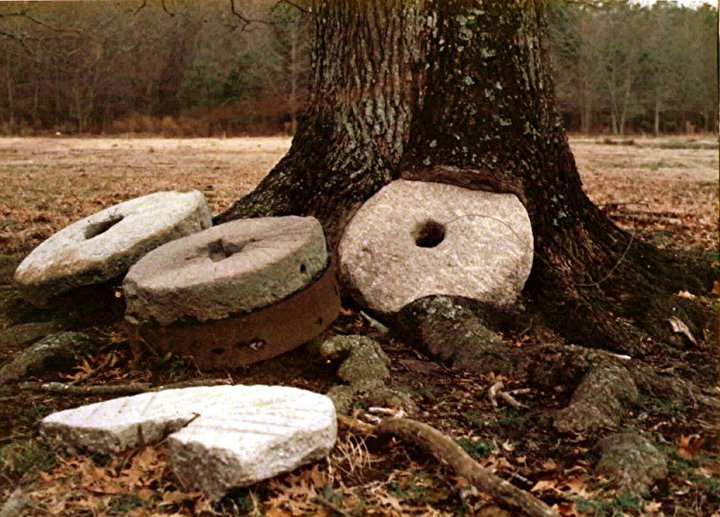
Abandoned millstones, Conetoe, Edgecombe County, North Carolina, about 1990.
6
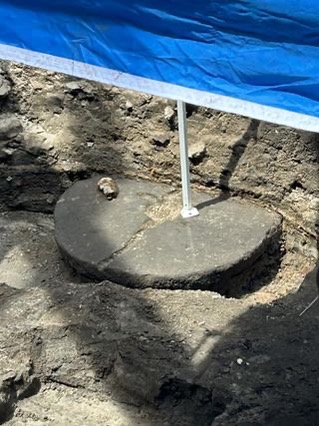
Another view of the millstone at the excavation provided by Barbara Dickinson
A Look at Our Mysterious Millstone
The Public Archaeology Corps’ dig on Quince Alley in downtown Wilmington continues to provide surprises and curiosities. Among the most unexpected recent discoveries, found while digging down into layers of 18th century history, was a millstone! Once, it would have been placed in a grist mill to grind corn or grain.
PAC Historian, David Norris
shares stories of
artifacts found
during Lab work.

1
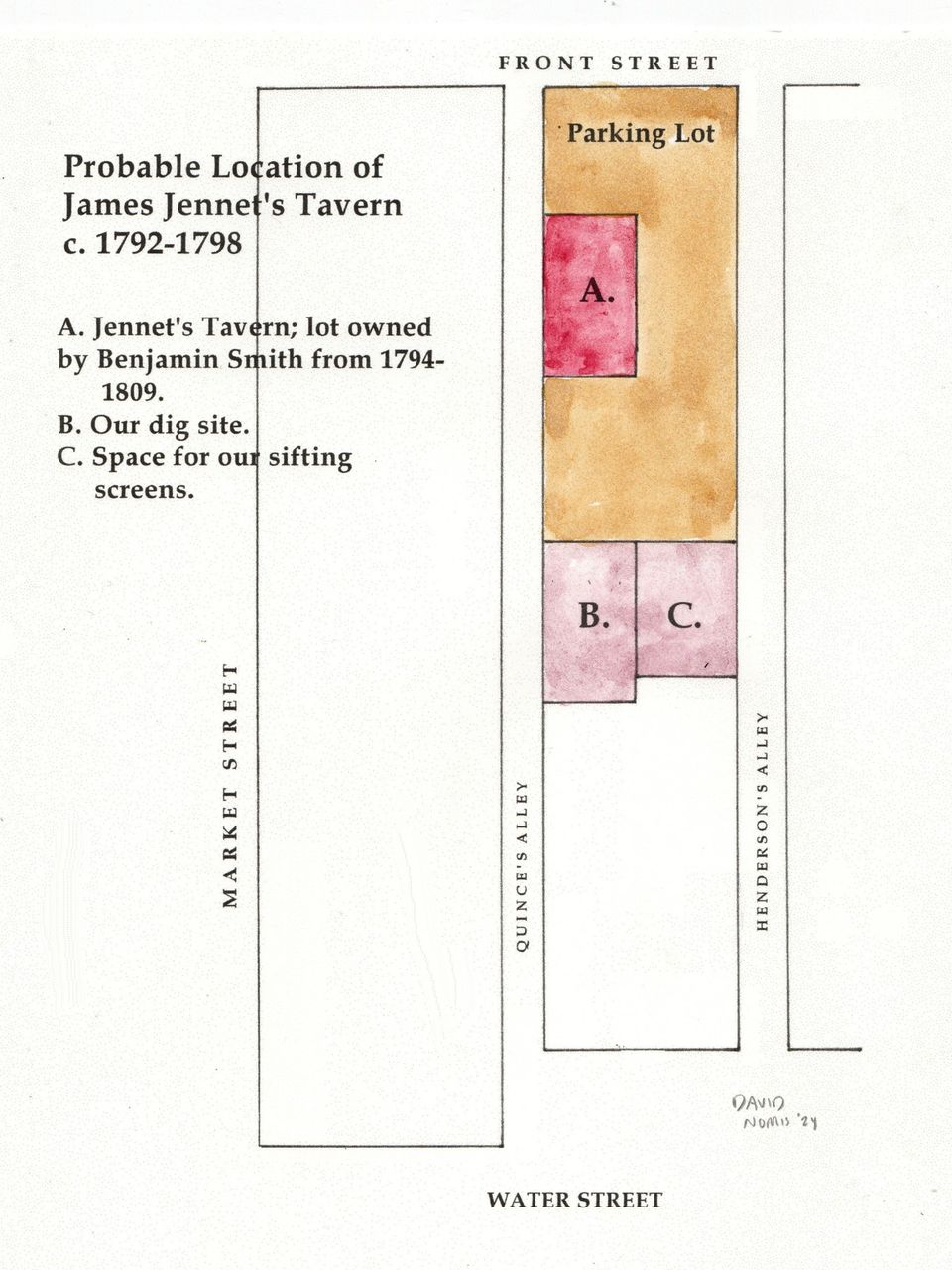
The approximate site of Jennet’s Tavern, c. 1792-1798.
2
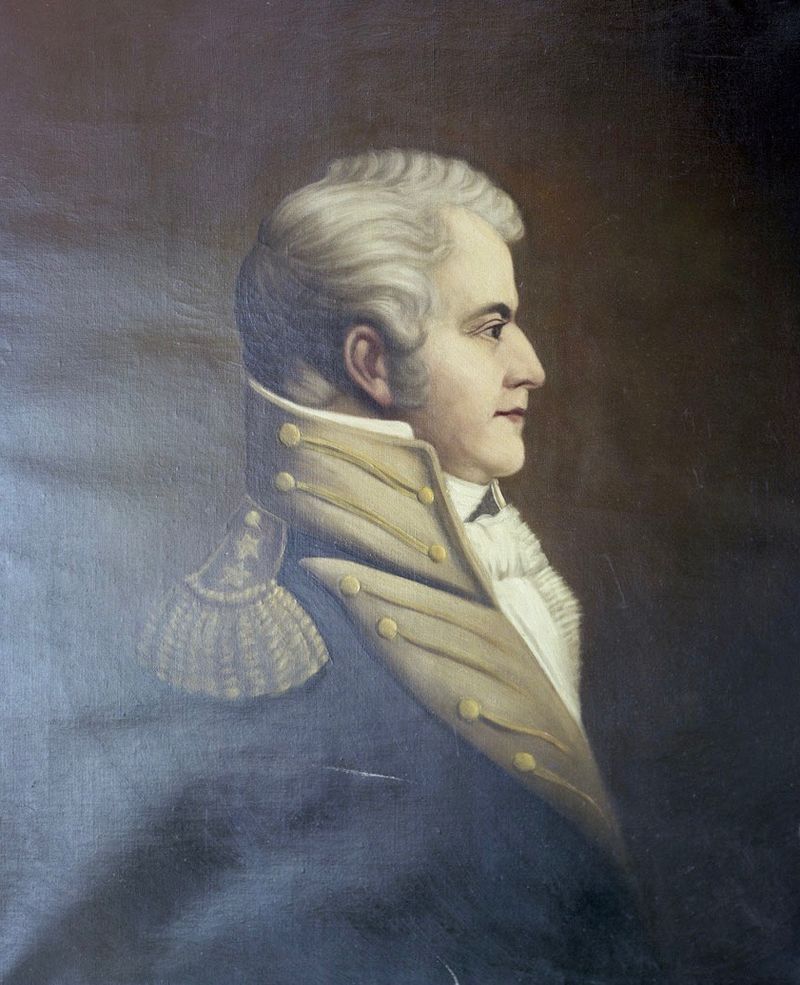
Benjamin Smith, owner of the Jennet’s Tavern lot from 1794-1809.
3
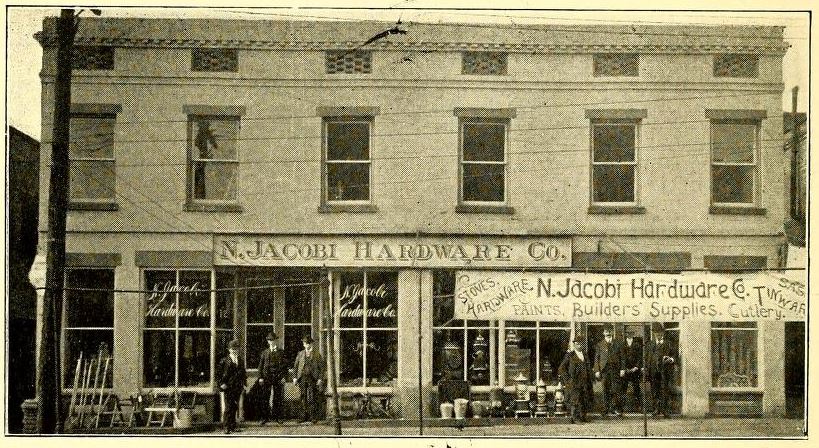
10-12 Front Street about 1902.
4
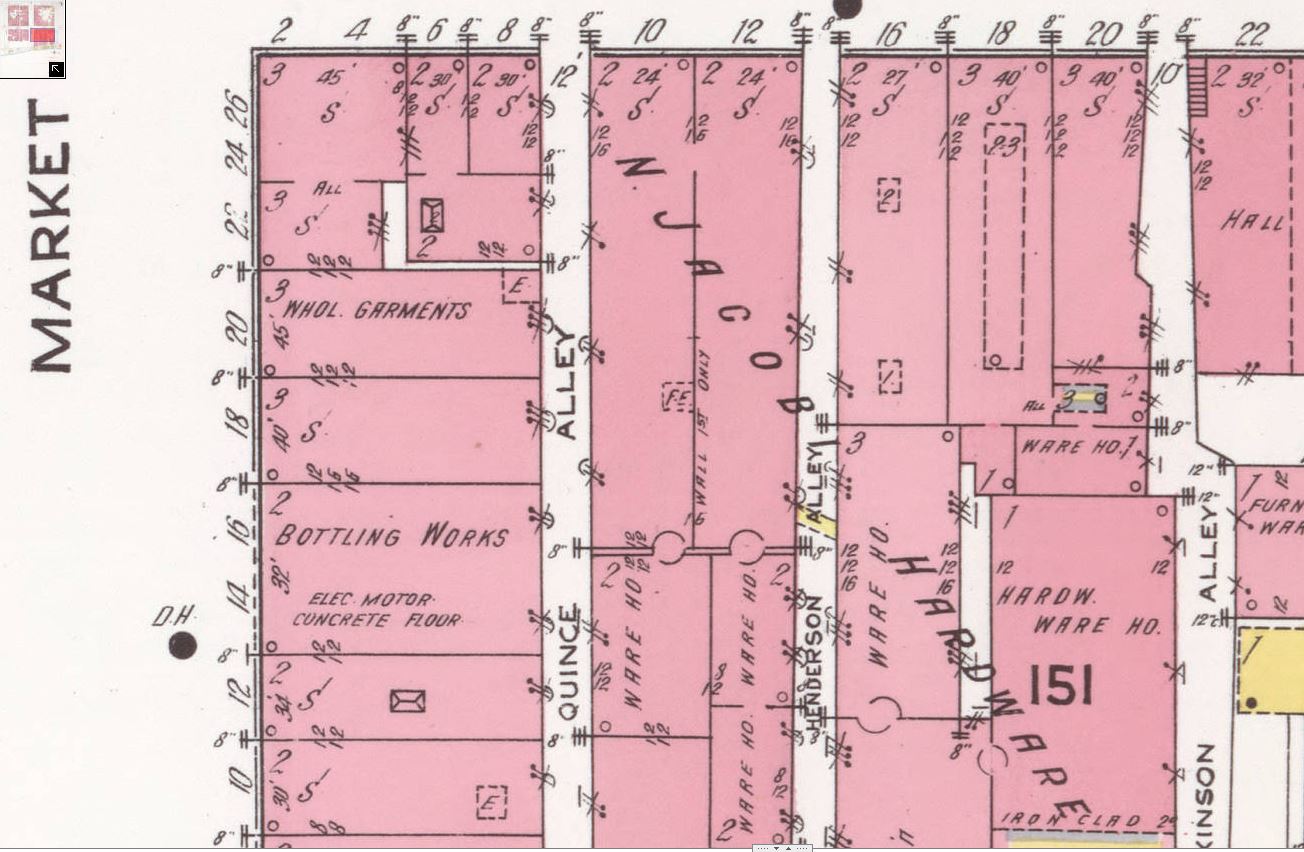
The dig site and parking lot area, 1915 Sanborn Insurance Map.
James Jennet’s 1790’s Tavern
Quite a few of the artifacts found in our dig with the Public Archaeology Corps on Quince’s Alley — bowls and stems of clay tobacco pipes; shards of possible wine or liquor bottles; and fragments of plates, bowls, cups, and glasses – are the sort of artifacts excavated from tavern sites. And, indeed, surviving records of Wilmington and New Hanover County indicate that as many as five (or more) taverns, ordinaries, or bars may have operated near our dig site between the 1750s and the 1840s.
Technically, an ordinary was a combination bar-restaurant-hotel, with stabling for the horses of overnight guests, while a tavern was a bar that might also serve food. In practice, people often used both terms interchangeably. Ordinaries and taverns in colonial and later New Hanover County required annual licenses from the county court.
One of the taverns near our dig site was run by James Jennet. The New Hanover County Court first granted him a license to keep an ordinary in Wilmington in 1792. Surviving county court records show that he renewed his license at least twice, in 1793 and 1796.
A February 22, 1798 ad in Hall’s Wilmington Gazette noted that there was a town house for sale “in Quince’s alley, which has long been occupied by James Jennet, and in use as a well frequented Tavern, the same having been lately repaired.” Unfortunately, Jennet’s Tavern was destroyed with practically the whole block in a fire on April 21, 1798. Jennet never renewed his tavern license after the fire.
In 1768, John Quince bought the lots along both sides of Quince’s Alley, from Front Street to the river. Soon after, he sold several parcels, including a lot running 42 feet along the south side of Quince’s Alley. The approximate position of the lot in the 1769 map of Wilmington by Joseph-Claude Sauthier shows a building, tinted in red watercolor on the map. The red tint is believed to represent brick buildings on the map.
At some point soon after 1768, William Evans obtained this 42-foot lot from Quince. Evans sold it to Peter Brown in 1778. A suspected Loyalist during the Revolutionary War, Brown suffered the confiscation of property by the patriot government. This lot changed hands a few times before Benjamin Smith bought it in 1794. Apparently, Smith rented the property to Jennet for use as a tavern. It was not uncommon for a house to be converted into a tavern, and the tavern keepers often lived in the same building.
The newspaper ad listing the tavern building for sale was among several placed by Benjamin Smith. Later serving as governor of North Carolina in 1810-1811, Smith owned Belvedere Plantation in Brunswick County, among numerous other lands. But, he only owned one lot on Quince’s Alley. Written records provide enough clues for us to know where this tavern stood.
The old Jennet’s Tavern place was evidently not rebuilt by April 15, 1806, when Smith offered his lot on Quince’s Alley for sale in the Wilmington Gazette. It took him until 1809 to sell it, when it was purchased by Col. Thomas Cowan. Later deeds for surrounding lots indicate that a lot on the northeast corner of Quince’s Alley and Front Street ran 28 feet west along the south side of the alley, where it joined the edge of the “42-foot lot”.
After Thomas Cowan died, the “42-foot lot” had several owners before another fire swept the block in 1845. New buildings appeared on the property. After the Civil War, a grocery store and a saddle and harness shop stood nearby on Front Street. The Jacobi Hardware Company moved there in 1870, and by 1901, that company owned the property between Quince’s and Henderson’s Alleys, running 117 feet back from Front Street to the walls of the brick buildings where Public Archaeology Corps is now working. Their hardware store and warehouse space filled the lot, covering up the former site of Jennet’s Tavern. Before World War II, the Jacobi Hardware Company moved out of 10-12 South Front Street, and the space was occupied by a men’s clothing shop and a jewelry store. After a fire in 1984, the damaged buildings were demolished and the site became the parking lot we see today.
1. The approximate site of Jennet’s Tavern, c. 1792-1798.
2. Benjamin Smith, owner of the Jennet’s Tavern lot from 1794-1809.
3. 10-12 Front Street about 1902.
4. The dig site and parking lot area, 1915 Sanborn Insurance Map.
1
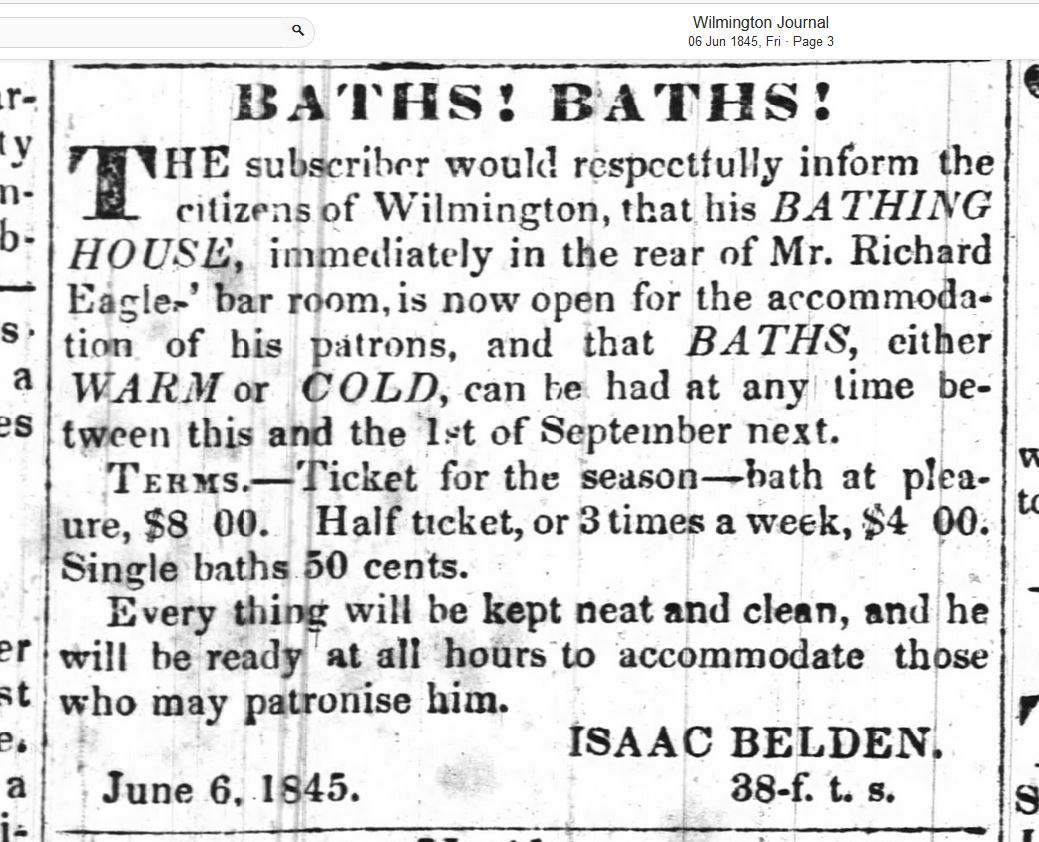
One of Isaac Belden’s ads for the bathing house on Quince’s Alley (Wilmington Journal, June 6, 1845)
2
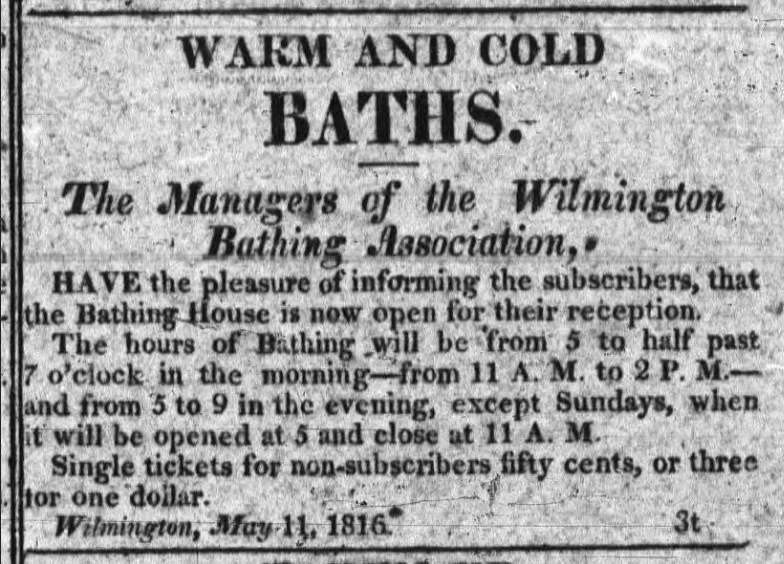
Ad for the Wilmington Bathing Association (Cape-Fear Recorder, May 20, 1816).
3
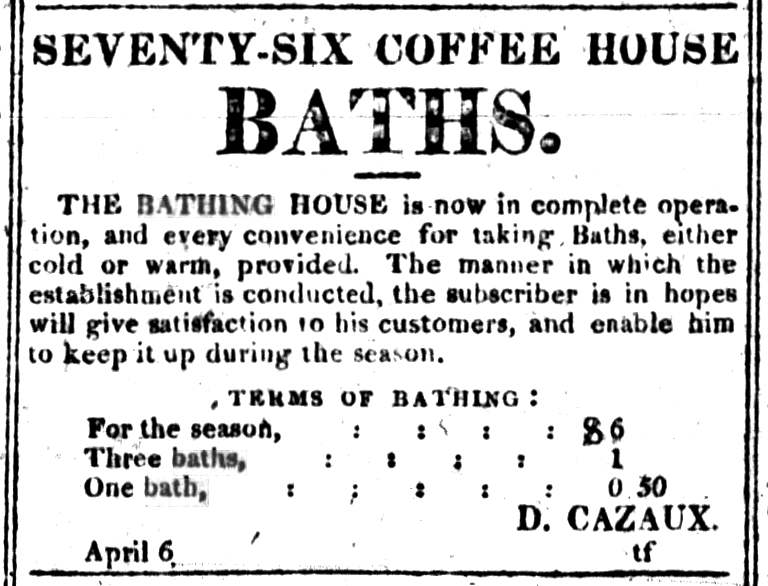
Ad for the Seventy-Six Coffee House (Cape-Fear Recorder, April 13, 1825).
4

A system for heating water at home; perhaps Isaac Belden had something like this installed at his bathing house on Quince’s Alley. (Alexander Watson, American Home Garden. New York: Harper & Brothers, 1859.)
Bathing Houses in Old Wilmington
In 1842, an emancipated former slave turned businessman named Isaac Belden opened an oyster house on Quince’s Alley, where the Public Archaeology Corps has conducted a dig since 2019. As summer 1843 approached, with the cool-weather oyster season at an end, Belden advertised a new enterprise, a bathing house.
The Clarendon Water Works (Wilmington’s first water plant) didn’t provide citywide running water until 1881. It was possible (although expensive) to bring running water into an antebellum house, from a water tank, fed by water pumped from a well or cistern. But, for most households, hauling water inside and heating it up to pour into a bathtub took a great deal of time and effort.
Belden’s was not the first public bathing house business in town. The Wilmington Bathing Association opened a bathing house on Front Street in May 1816. They were open daily from 5 a.m. to 7:30 a.m.; 11 am to 2 pm; and 5 to 9 pm; except Sundays, when they were open from 5 a.m. to 11 a.m. Non-subscribers could get a bath for 50 cents, or bathe three times for one dollar.
In the 1840s Belden also charged 50 cents for one bath. He offered a “ticket for the season” for $8, with as many baths as one wanted, or a $4 “half ticket”, which allowed three baths a week during the season.
The “Old ‘76” tavern and hotel building stood on the east side of Front Street between Orange and Ann Streets. In 1819, owner Dominique Cazaux added bathing rooms to the business, which already included a coffee house, bar room, reading room (with a library of out-of-town newspapers), hotel rooms, and a stable. The Verandah Saloon, on the southeast corner of Water Street and Wilkinson’s Alley, added a bath house staffed with attendants in 1849.
By 1856, the “eating saloon” at the city’s Wilmington & Weldon Railroad Depot had “a number of bathing rooms, elegantly fitted up for warm or hot baths”, according to the Wilmington Journal.
Little detail was given in the Wilmington papers about the set-up of the 1800s bathing houses. One might expect water tanks; tubs; pumps; drains; and some sort of furnace or heating source for the water. In Savannah, Georgia, an 1850 fire was thought to have started in a bathing house “with stoves and other apparatus for heating water”, according to the Wilmington Journal.
In 1870, the contents of a shaving saloon at Front and Princess were offered for sale. Among the items were “4 Bath Tubs, Faucets and Fixtures, 3 Marble Slabs, 1 Centre Table, 1 Square Table, Towels, Aprons, &c.”
Wilmington’s most elaborate bathing establishment was certainly J. W. Spaulding’s Floating Bath House. Opened in 1870, the bath house was built on a flatboat anchored near the ferry dock at the foot of Market Street. Two 10 x 30-foot wings, enclosed on the sides and bottom by lattice work, held bathers safely in a sort of pool about 3 to 5 feet deep. Changing rooms were built on the flatboat, and a large roof covered the whole thing.
The Floating Bath House was more for swimming than bathing for cleanliness. The downtown riverbank itself attracted bathers during the 1800s. Whether trying to keep clean or cool off on hot summer days, quite a few 19th century skinny-dippers were arrested at Greenfield Pond, or along the river downtown between Harnett and Castle Streets. Another problem was that people took baths in the Rock Spring at the foot of Chestnut Street – which was a source of drinking water for people living in that part of town!
Illustrations: 1. One of Isaac Belden’s ads for the bathing house on Quince’s Alley (Wilmington Journal, June 6, 1845). 2. Ad for the Wilmington Bathing Association (Cape-Fear Recorder, May 20, 1816). 3. Ad for the Seventy-Six Coffee House (Cape-Fear Recorder, April 13, 1825). 4. A system for heating water at home; perhaps Isaac Belden had something like this installed at his bathing house on Quince’s Alley. (Alexander Watson, American Home Garden. New York: Harper & Brothers, 1859.)
1
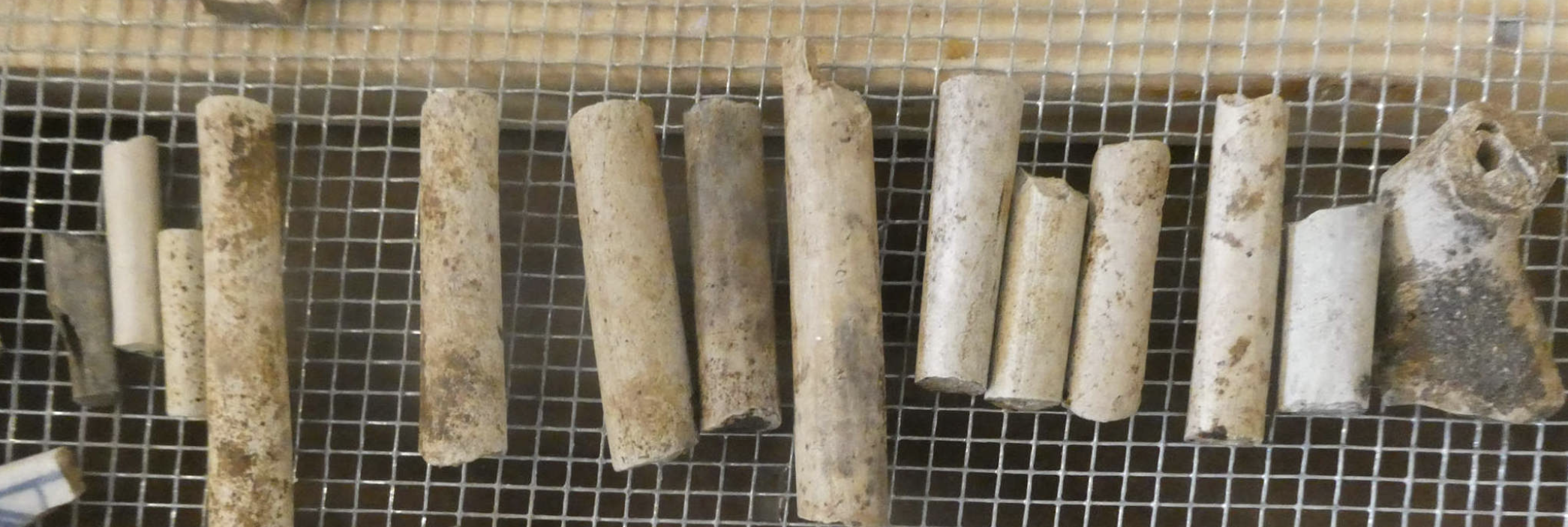
A batch of pipe stems found at the Quince’s Alley dig, after cleaning in the PAC Lab.
2

Tobacco pipe ad in the American Weekly Mercury (Philadelphia, Pennsylvania), May 12, 1720.
3

An ad for a Wilmington merchant selling “tipt pipes” (tipped with glaze or wax) and short pipes. North Carolina Gazette (Wilmington), April 6, 1797.
4

Smokers with long-stemmed 18th century tobacco pipes; a detail from William Hogarth’s 1733 engraving “A Midnight Modern Conversation”.
5

English gentlemen, smoking long-stemmed clay tobacco pipes in a satirical 1792 print. (NY Public Library.)
6

Part of a maker’s mark on a pipe stem fragment.
7

A fragment of a pipe stem, giving us a cross-section.
A Look at Clay Tobacco Pipes
Among the trove of artifacts recovered by the Public Archaeology Corps’ dig on Quince’s Alley in downtown Wilmington are untold hundreds of fragments of clay tobacco pipe stems and bowls. Large quantities of pipe stem and bowl fragments are often found near tavern sites, and we know from various records that there were several taverns or bars on Quince’s and Henderson’s Alleys near our dig site between the 1750s and the 1840s. Tobacco pipe fragments can give clues to dating the deposits they’re found in, and tie the port of Wilmington into the wider world of 18th century trade.
Tobacco was native to the “New World”, and American Indians used tobacco for thousands of years before Spanish ships carried it to Europe in the mid-1500s. English settlers of “the Lost Colony” found tobacco in North Carolina in the 1580s, but tobacco was already well-known in England by that time. In the early 1600s, commercial production of tobacco began in the Jamestown colony in Virginia.
English manufacturers began churning out tobacco pipes in the Elizabethan era. Dutch factories also produced pipes, and pipes were made in Philadelphia by the late 1600s. Cigars didn’t catch on until the mid-1800s, and cigarettes only became popular after the Civil War. Until then, nearly anyone who smoked tobacco used a pipe.
Hundreds of factories in England produced pipes. Women worked in many of them, and some women owned pipe factories and placed their own makers’ marks on them.
To make pipes, workers rolled out a long piece of clay to shape the stem, adding a blob at one end to create the bowl. Lengthy stems, often about one foot long, were a distinct feature of pipes of the colonial era and later, although short pipes were also advertised and sold.
Once the pipe was shaped, a metal wire was carefully poked through the stem to create the bore. Next, the damp clay was squeezed into a mold. A cone-shaped metal bit pressed into the end of the pipe to make the bowl.
Little dies with letters or symbols, not unlike the hallmarks used to mark silverware, were pressed into the clay to create unique maker’s marks. Many marks are well-documented, and can be tied to the location and dates of operation for a pipe factory.
When dry, the pipes were taken out of the molds and smoothed out before being dried for three days or so. Then, the pipes were fired in a special pipe kiln. For special “tipped pipes”, a dab of glaze was added to the end of the stem before firing, so the clay would not stick to the lips of the smoker. Some pipes were tipped with wax.
Despite the labor involved, clay pipes were very cheap. In 1720 a Philadelphia tobacco pipe maker named Richard Warder offered a gross of pipes (12 dozen) for only four shillings. At that rate, customers got three dozen pipes for one shilling, or three pipes for a penny. Buying more than one gross at a time dropped the price to three shillings.
Pipes were fragile enough to break easily, and cheap enough to replace. After some use, pipes could become clogged with “tar”, or tobacco residue. Rather than throw away the pipe, though, many smokers set the pipe in a hot fire to burn away the accumulated tar. In his 1720 ad, Richard Warder let customers know they could have their “foul Pipes burnt” in his kiln for eight pence per gross.
The shapes and styles of pipe bowls and stems offer clues for dating them. Another way of dating pipe fragments is by the diameter of the hole in the stem. The holes in English pipe stems consistently became narrower from the late 1600s until well into the 1700s. Until changes in the pipe-making industry near the end of the 18th century spoiled this neat progression, the width of the holes in the stems is a very useful dating measure.
Surviving 18th century records of the Port of Brunswick (an administrative area that covered colonial and federal-era Wilmington, Brunswick Town, and the plantations and landings on the Cape Fear) mention pipes in the cargo of incoming vessels.
Among the local merchants named as receiving shipments of tobacco pipes was John Burgwin. He once owned the Burgwin-Wright House, which stands today at Third and Market Streets. Records of Port Brunswick show that Burgwin received consignments of pipes aboard an unnamed brig from Bristol, England in 1773; from England in the brig William in 1774; and in a sloop from New York in 1789.
1
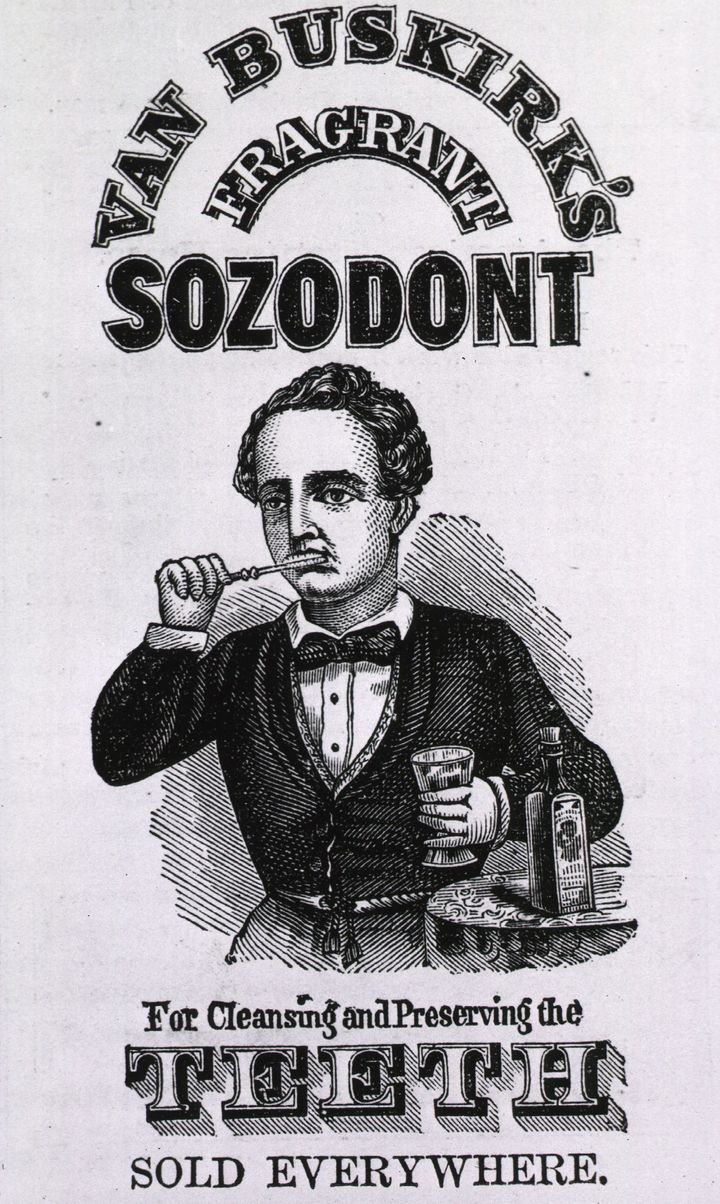
A toothbrush ad, from Harper’s Weekly (New York), July 6, 1867.
2
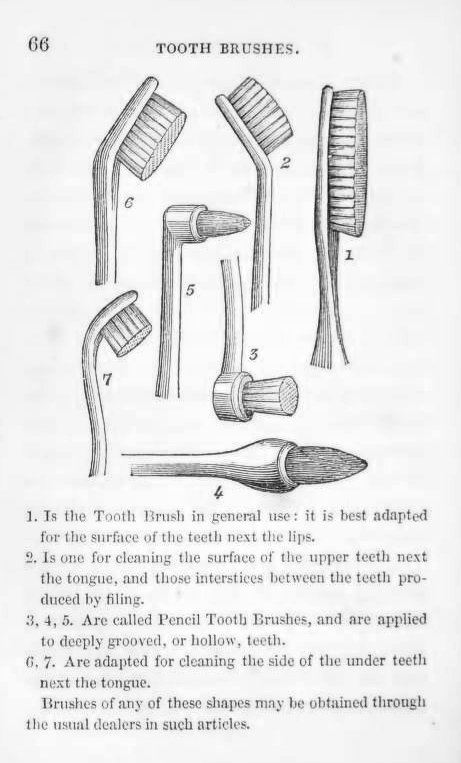
Toothbrush styles from D. A Cameron, Plain Advice on the Care of the Teeth … (Glasgow, 1838).
3
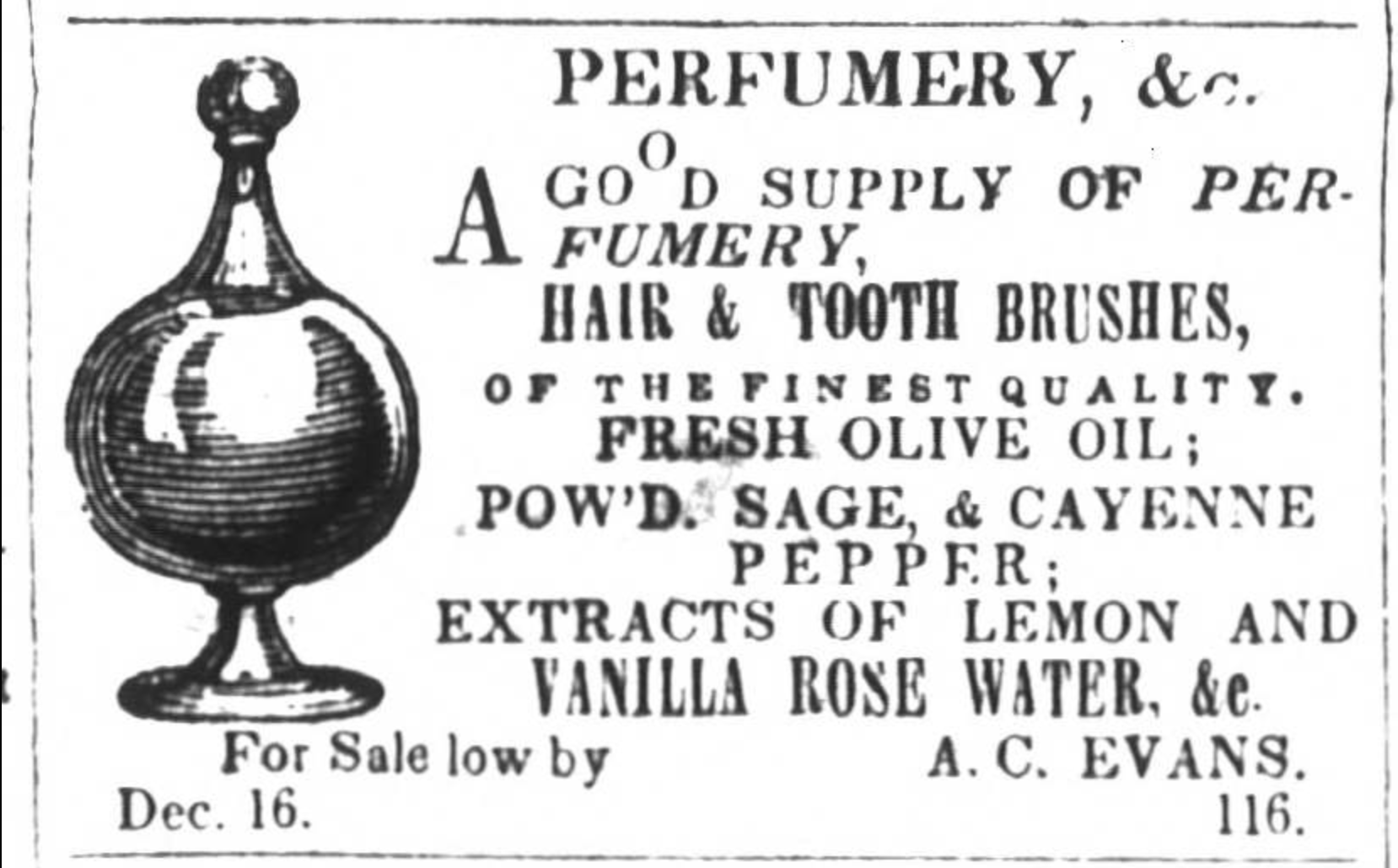
Wilmington merchant W. Ware advertised toothbrushes for sale, in the Wilmington Tri-Weekly Commercial, March 3, 1847.
4
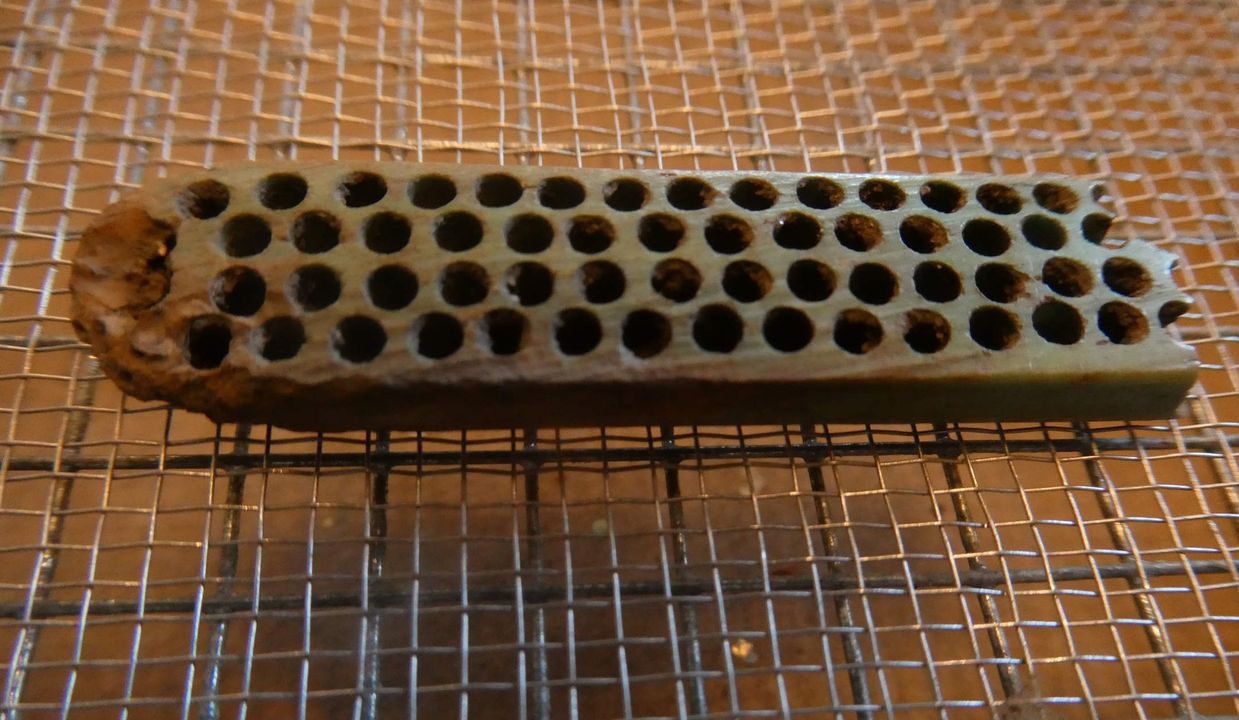
The front of our toothbrush.
5
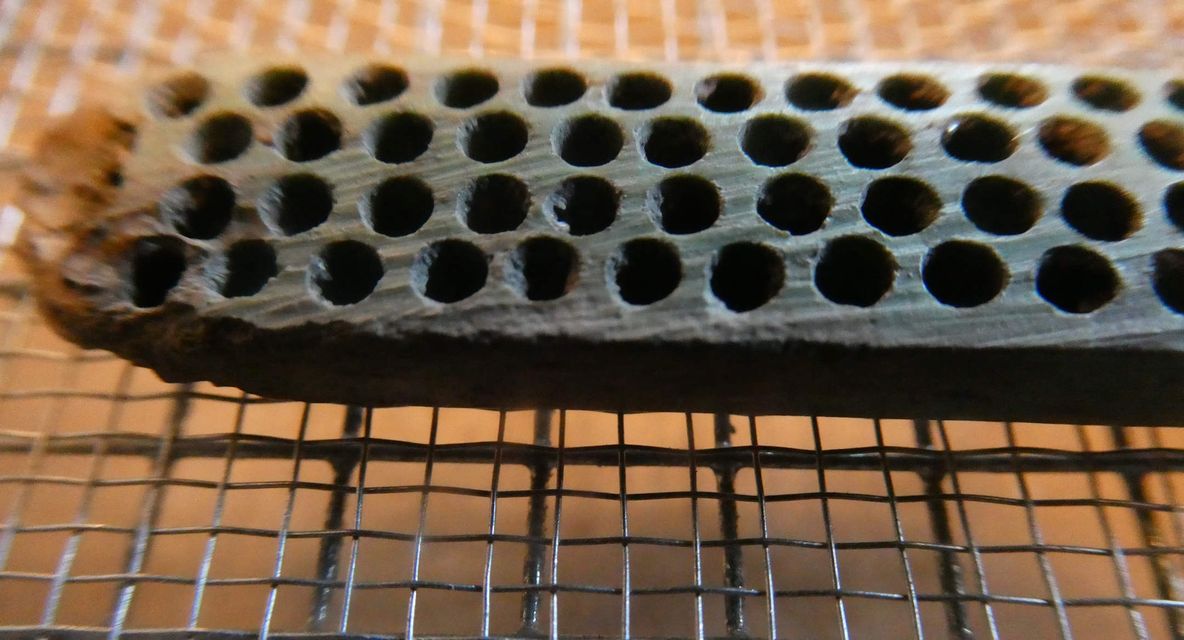
The front of our toothbrush.
6
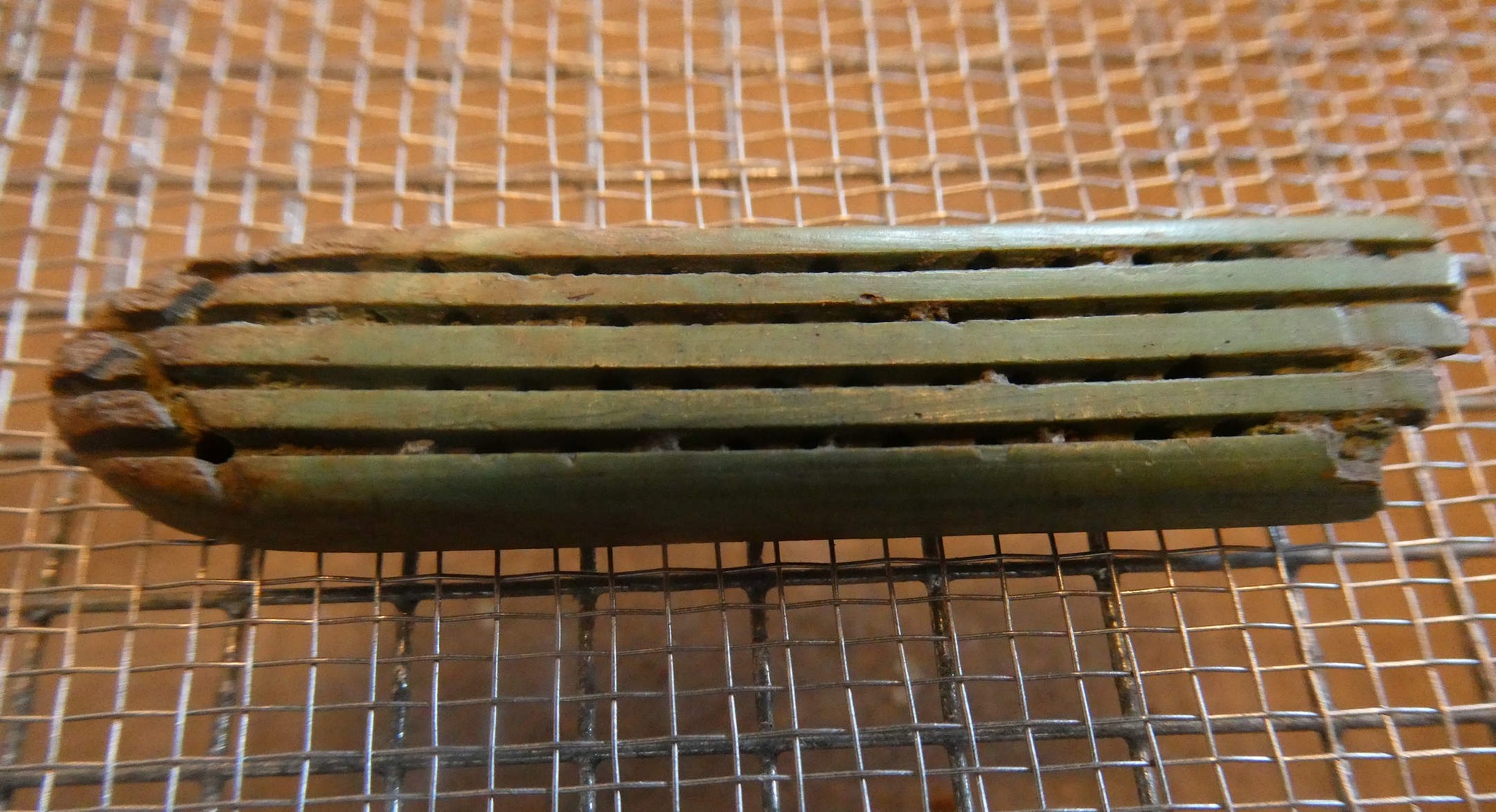
The back of our toothbrush, showing the slots cut to connect with the holes drilled from the top to hold the bristles.
7
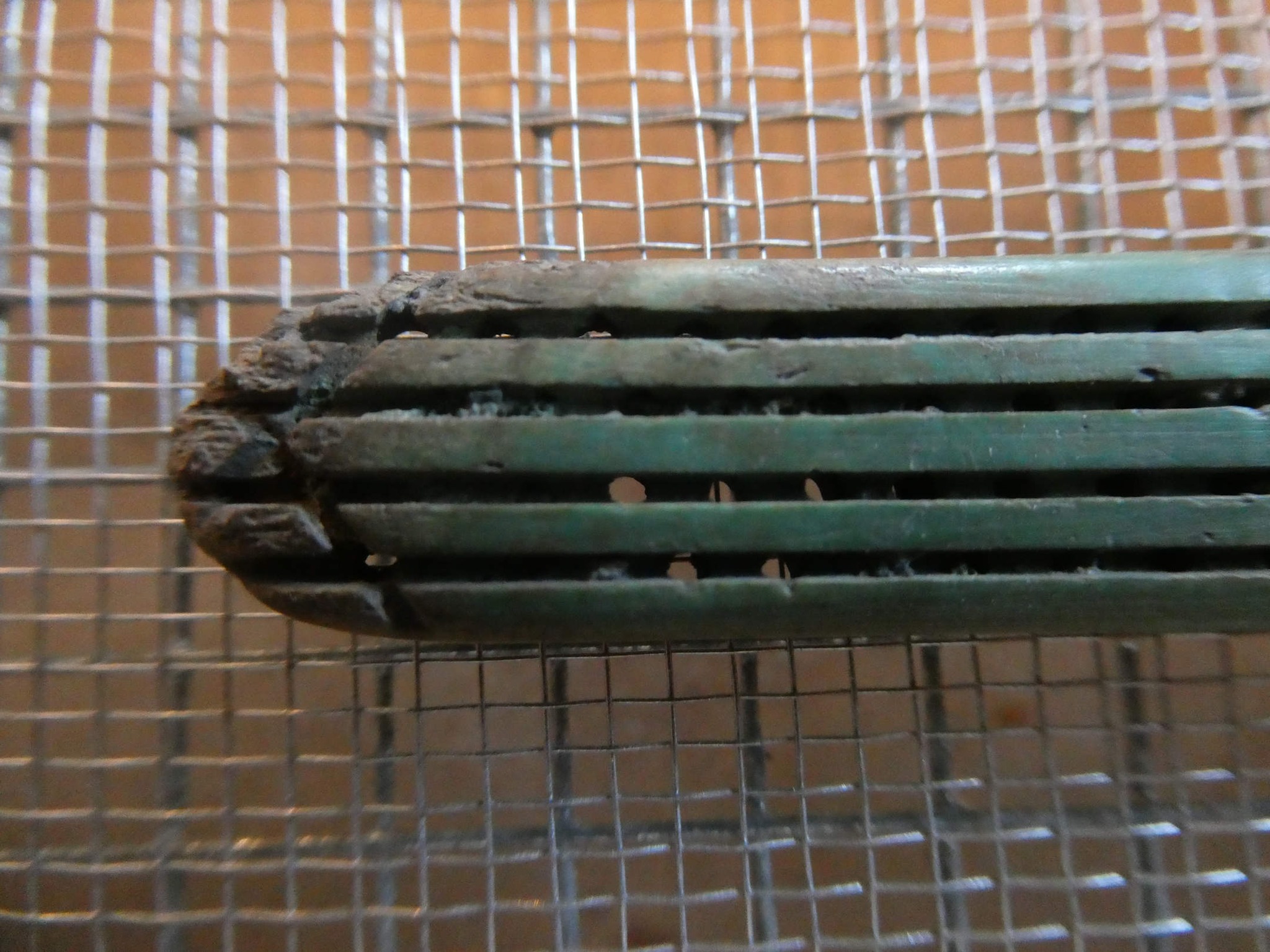
The back of our toothbrush, showing the slots cut to connect with the holes drilled from the top to hold the bristles.
The Toothbrush Found by Quince’s Alley
One of the most interesting artifacts recently cleaned in the Public Archaeology Corps’ lab is a part of an early toothbrush. By its style, and the level it was found, it likely dates from the mid-1800s. The block where we are digging on Quince’s Alley in downtown Wilmington was last swept by fire in 1845, so perhaps the toothbrush dates from about that time.
Our example appears to be made of bone, with a pale green paint of some sort applied to it. It was quite common to use bones, such as a piece of a cow femur, to carve into toothbrushes in the 18th and 19thcenturies. Various artificial materials appeared in toothbrushes in the late 1800s, but bone was still used for the handles well into the 1900s.
The handle of our toothbrush was broken off, but the head contains four rows of tiny and regularly spaced holes. Slight variations in the spacing show the holes were drilled carefully by hand one at a time; machinery to drill more precise holes was introduced some years after the Civil War.
Turning the brush head over, one sees four very finely-cut straight grooves, dug in just deeply enough to connect with the holes from the top. Hog bristles were commonly used in toothbrushes then and later. The grooves cut in the bottom of the toothbrush allowed the bristles to be secured and woven to the brush.
In 1846, Wilmington merchant W. Ware sold toothbrushes for 25 cents each. For the same price, you could buy boxes of “Tooth Wash or Tooth Powder of the best description” for 25 cents. Wilmington druggist W. H. Lippitt offered toothbrushes made in America, France, and England in 1855.
A January 11, 1823 recipe for tooth powder in the New England Farmer included some interesting ingredients:
2 parts Peruvian bark (the bark of the cinchona tree, the source of quinine);
4 parts Armenian bole (a kind of clay)
4 parts prepared chalk (finely ground and purified chalk)
2 parts myrrh (a fragrant resin extracted from small thorny trees native to parts of the Arabian Peninsula and the Horn of Africa).
2 parts loaf sugar
½ part carbonate of soda
2 parts Castile soap (an olive oil-based soap from Spain)
The New England Farmer advised, “The mouth should be rinsed with cold water, and the brush dipped into it before the powder is used. A quantity of the powder should then be taken up on the end of the brush, and applied to every part of each tooth … The best time for using the tooth powder is after breakfast, and this should be done every day. In addition to this, we should be careful to cleanse the mouth with water and the brush, after every meal …”
Many 19th century people did not bother with toothbrushes. Cultural historian Kerry Segrave estimated that even in 1920, only one in four Americans owned a toothbrush. A British officer, Col. Arthur Cunynghame, published a memoir of a tour of the United States in 1852. The colonel was horrified to see hanging in the washrooms of American steamboats, “a common tooth-brush … chained to the wall for general use!”
1. A toothbrush ad, from Harper’s Weekly (New York), July 6, 1867.
2. Toothbrush styles from D. A Cameron, Plain Advice on the Care of the Teeth … (Glasgow, 1838).
3. Wilmington merchant W. Ware advertised toothbrushes for sale, in the Wilmington Tri-Weekly Commercial, March 3, 1847.
4 and 5. The front of our toothbrush.
6 and 7. The back of our toothbrush, showing the slots cut to connect with the holes drilled from the top to hold the bristles.
1
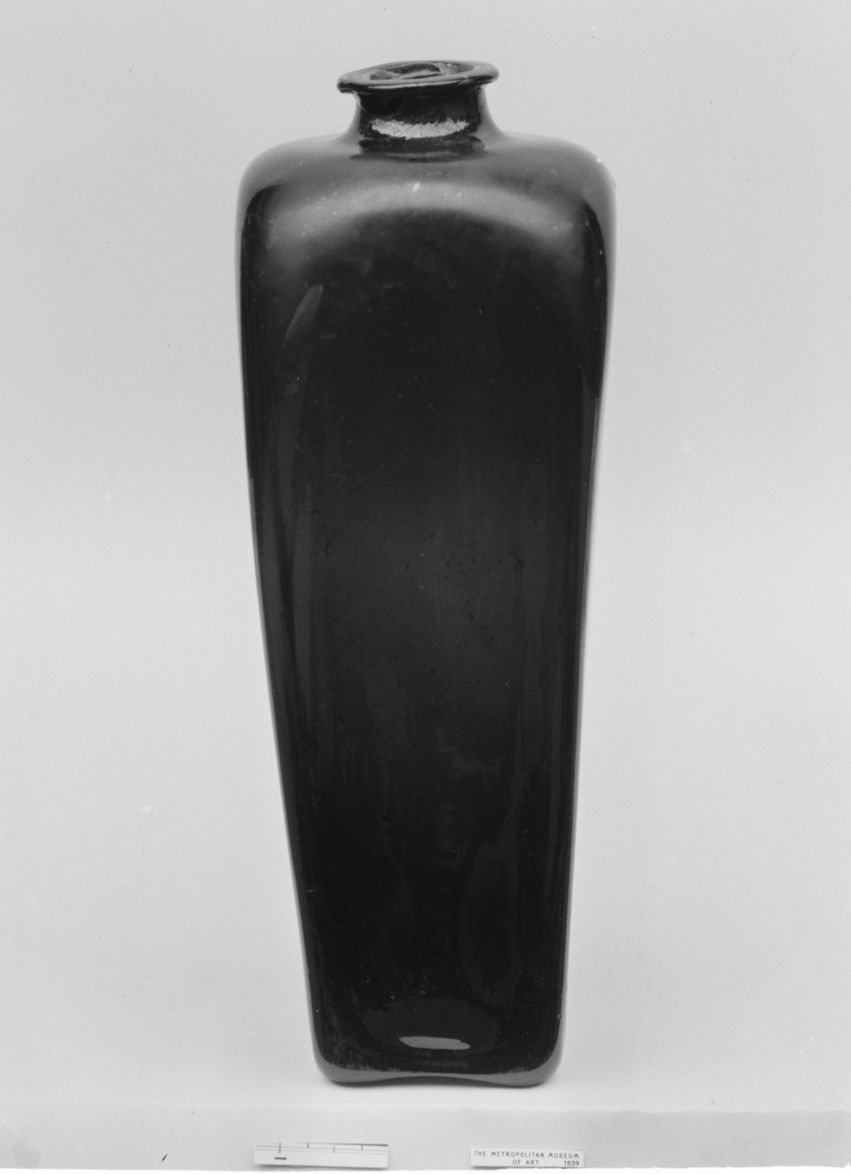
An 18th or 19th century tapered case bottle, from the Metropolitan Museum, New York City.
2
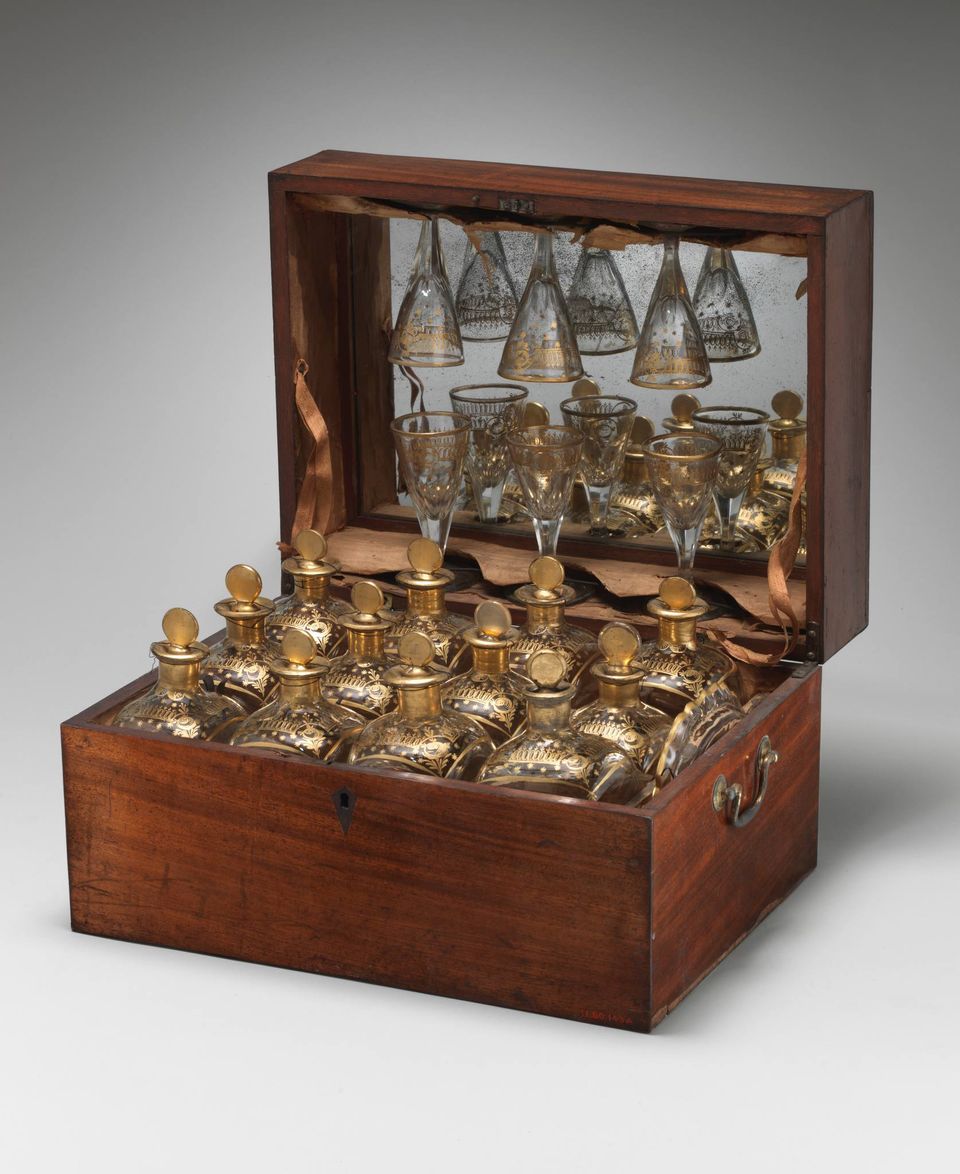
Small case bottles fit into wooden cases. This elegant English piece contained a set of drinking glasses and a mirror. (Metropolitan Museum of Art).
3
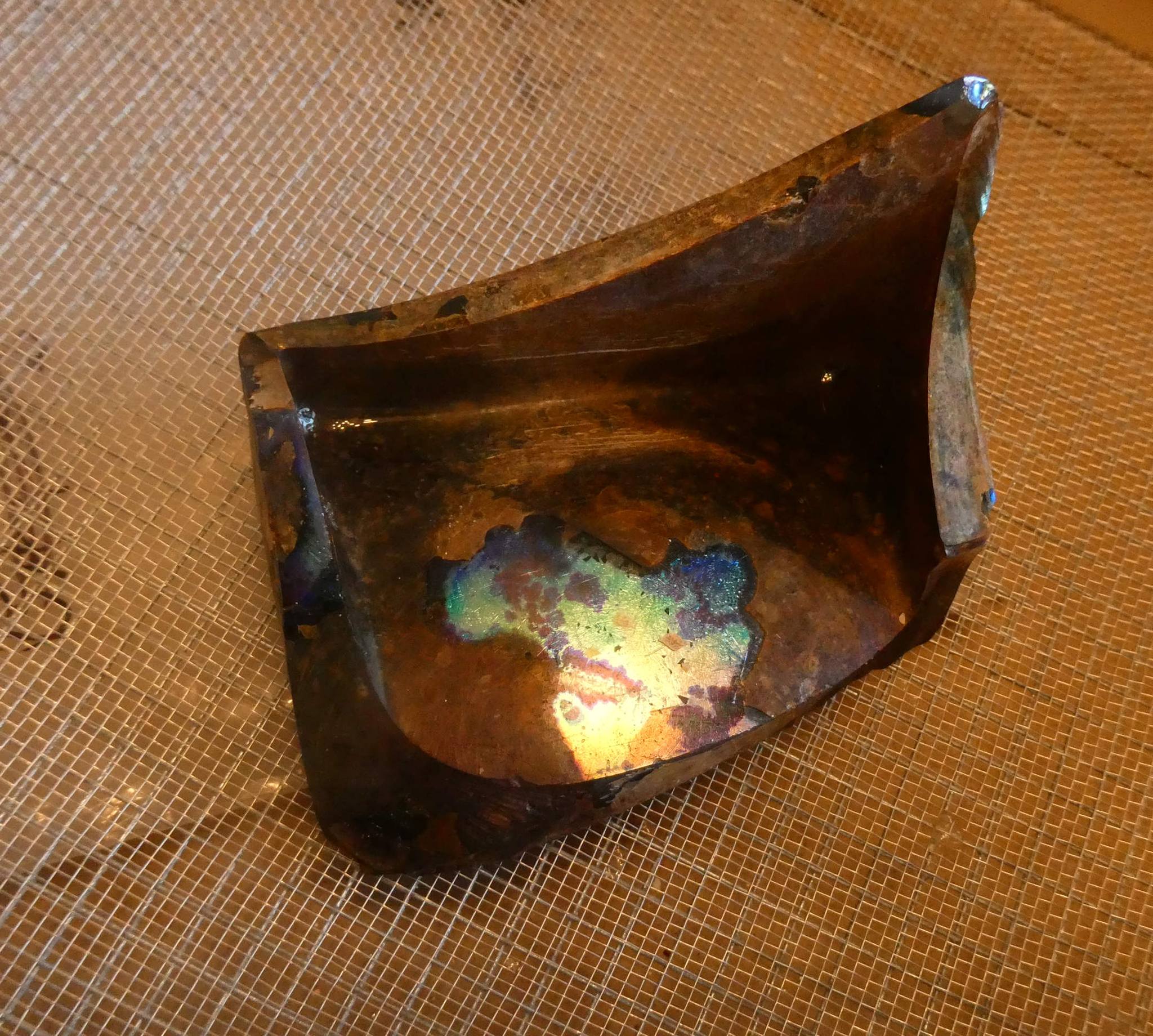
A fragment of the base of a case bottle, found in our dig on Quince Alley.
4
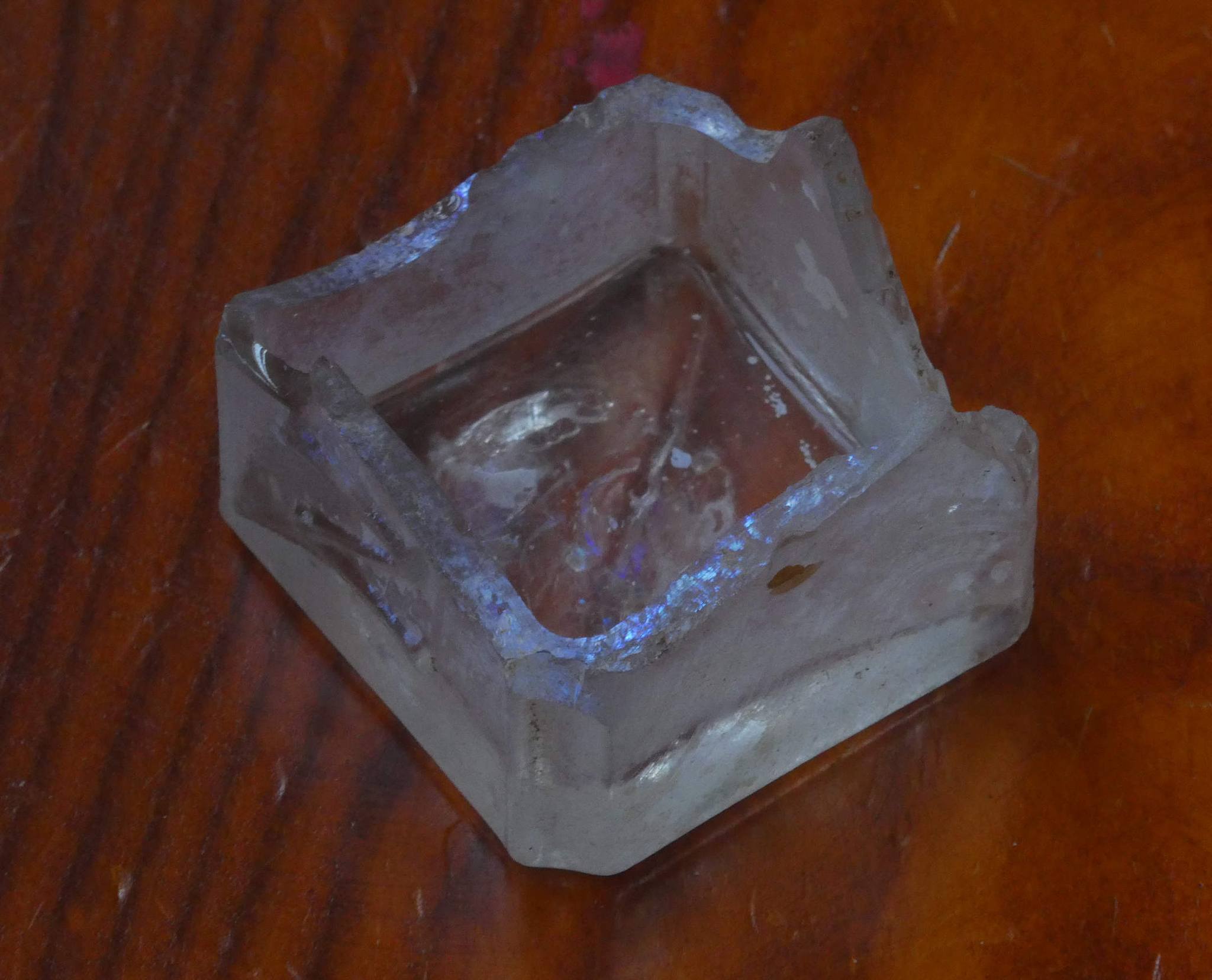
The base of an “apothecary bottle”; such bottles could fit in apothecary chests used by druggists, doctors, and families.
5
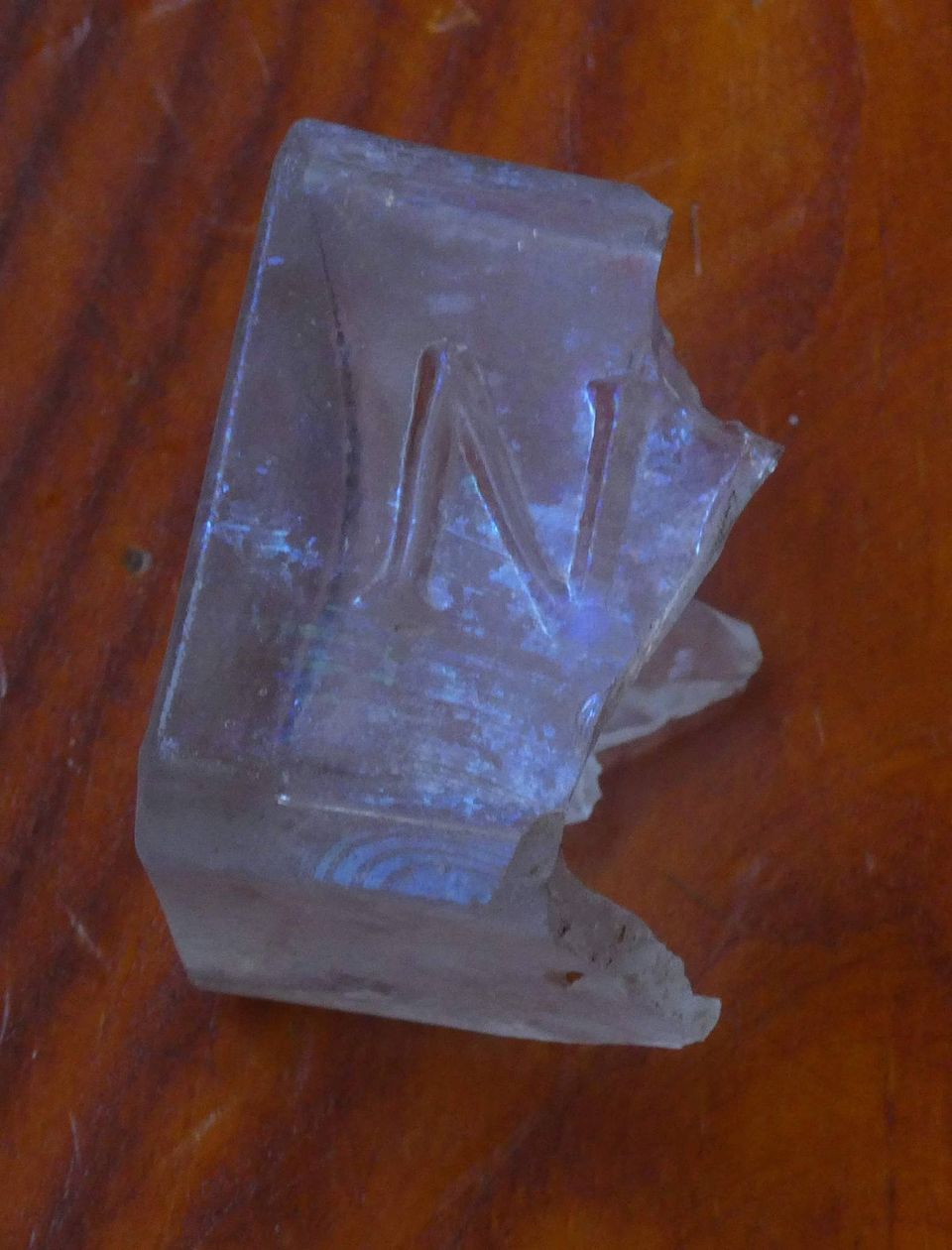
The base of an “apothecary bottle”; such bottles could fit in apothecary chests used by druggists, doctors, and families.
6
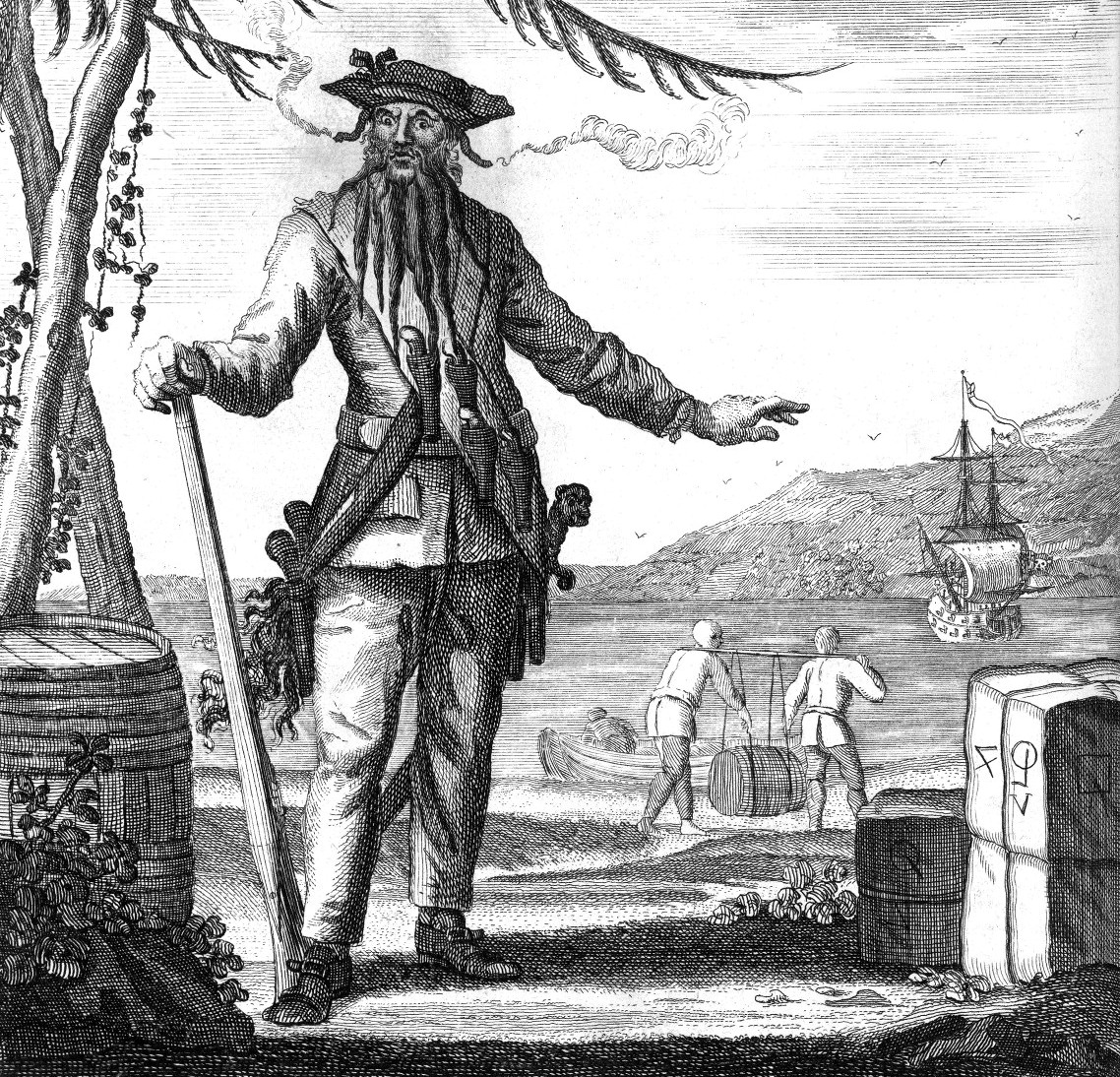
The crew of the notorious pirate Blackbeard made grenades out of case bottles filled with gunpowder.
Bottles
A look at some of the glass fragments we’ve found, starting with bits of case bottles and “gin bottles” ….
At the Public Archaeology Corps’ dig by Quince Alley in downtown Wilmington, we have certainly found lots of fragments of 18th and early 19th century bottles. Many of these pieces have a square base. Rather than being curved like most bottles, some were made with four straight sides with slightly rounded corners. Other bottles had four sides, but were slightly tapered from the square base. Known as “case bottles”, and made in a variety of sizes and types, they were indeed perfect for shipping in crates and chests.
Case bottles were hand-blown in a laborious process. The main part was blown into a square mold to shape it. Sometimes, wooden molds were used; they had to be kept wet to avoid the molten glass from setting them on fire. The neck and shoulder were created in a separate step, and added to the main part of the bottle while the glass was still in a partially molten state. A tapered bottle was easier to remove from the mold.
Apothecary chests, wooden boxes with small compartments to hold case bottles of medicines, are found in many museums and antique shops. Similar boxes, intended to hold a selection of liquor bottles, were crafted with elegant style and had a compartment for a set of drinking glasses. Some British or American officers carried such boxes of case bottles on military campaigns.
Larger case bottles (often of dark green glass) are sometimes called “Dutch gin bottles”, although they were used for other products as well. (At any rate, “gin” bottles would have been washed and reused many times, and might have held several different liquors before they were broken and discarded.)
Gin, typically a grain-based liquor primarily flavored with juniper berries, became popular in the 17th Netherlands. Often the drink was called “Geneva”. There was no connection with Geneva, Switzerland; “Geneva” was an anglicized version of the Dutch word jenever, for “juniper”.
Although rum and wine usually arrived in North America in gigantic wooden casks, gin normally crossed the Atlantic in case bottles packed in wooden crates. Records of Port Brunswick (a customs district including Brunswick Town, Wilmington, and various Cape Fear River landings) record a great many crates of gin arriving in Wilmington during the 1780s. The actual place of manufacture doesn’t appear in the books, but the customs officials wrote where the cases of gin were shipped from.
In the years 1784-1789, Port Brunswick records show at least one large shipment of 70 cases of gin direct from Rotterdam in the Netherlands. Thousands more bottles of gin came from the Dutch colonies of St. Eustatius and Curacao; the French possessions of Guadeloupe and Martinique; the British colony of Antigua; St. Bartholomew (a former French colony in the Caribbean, which was ceded to Sweden in 1784); and the American ports of Charleston, New York, and Boston.
By a rough count of the Port Brunswick records, in the calendar year 1789 alone, 267 cases of gin were unloaded. That would be 3,204 bottles if the cases held one dozen each. Much of this gin was likely sold on to merchants in Fayetteville and elsewhere in the region.
Empty bottles were valuable enough not only for reuse, but for shipping to other ports. A shipment of five crates of empty gin bottles arrived at Port Brunswick from Rhode Island in 1789. Some merchants advertised for bottles. In 1787 merchants John and Thomas Read of Boston, for instance, offered “Cash given, for empty bottles and gin juggs”. For that matter, merchants might also buy the empty gin crates as well.
The notorious pirate Edward Thatch or Teach, aka “Blackbeard”, found another use for case bottles. According to an early 18th century account, when his ship was attacked by a detachment of the Royal Navy at the Battle of Ocracoke Inlet in 1718, the pirates “threw in several new-fashioned sort of grenadoes; that is, case-bottles filled with powder and small shot, slugs, and pieces of lead and iron, with a quick-match [fast-burning fuse] in the mouth of it …” However, the case bottle grenades did not save Blackbeard from being killed, nor did they prevent the capture or death of his entire crew.
1

Gov. Arthur Dobbs of North Carolina, wearing a wig.
2
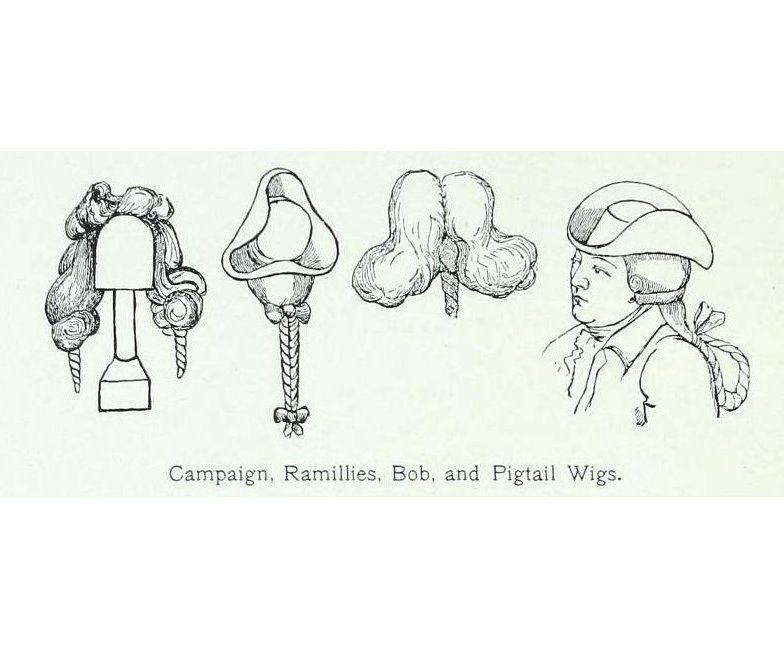
Types of 18th century wigs.
3
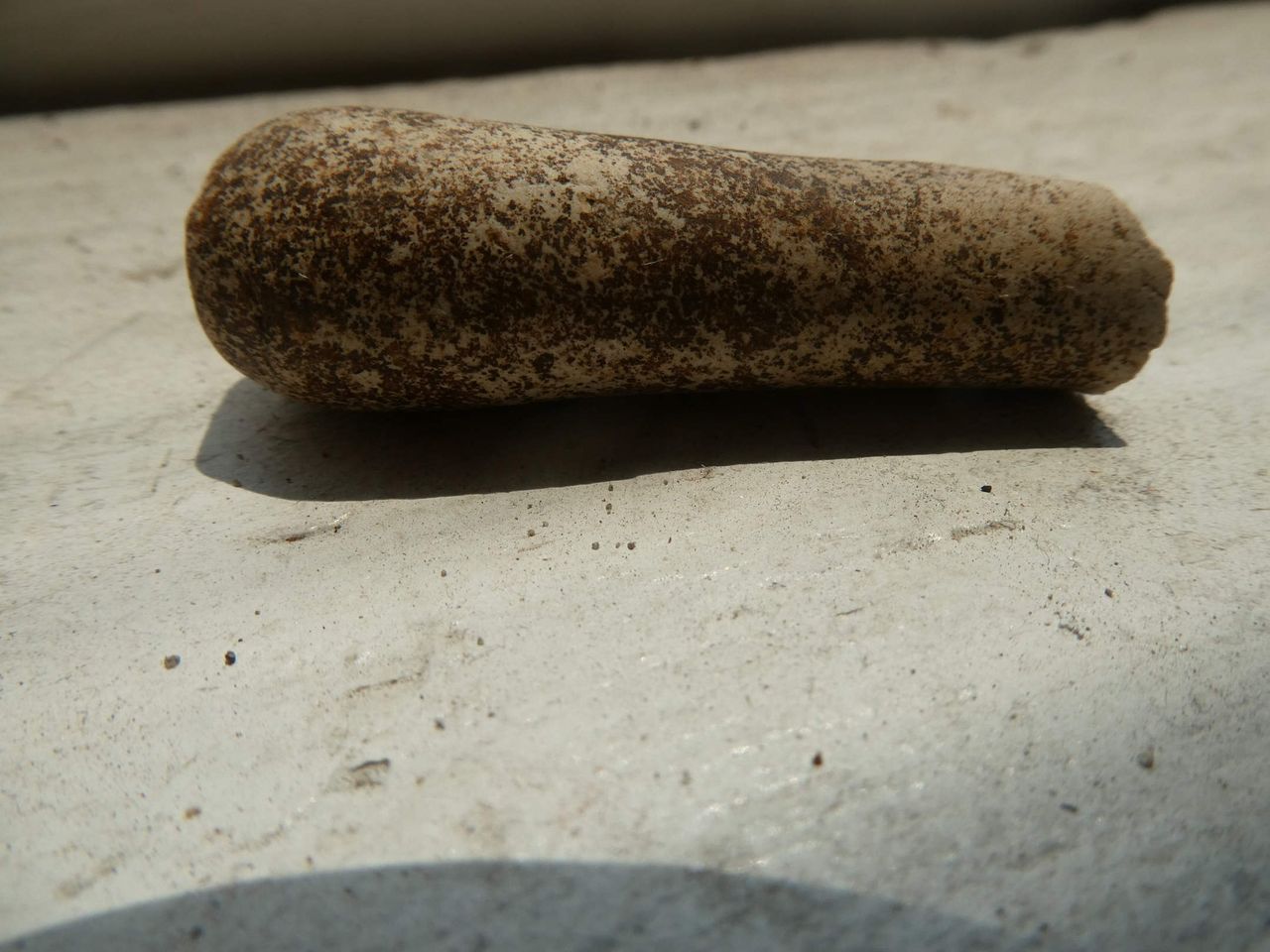
The wig curler fragment found in the Quince Alley dig.
4

What the wig curler might have looked like unbroken.
5

A newspaper ad placed by Roukes & Chaldwell, wigmakers in colonial Wilmington. (North Carolina Gazette, February 26, 1766)
6
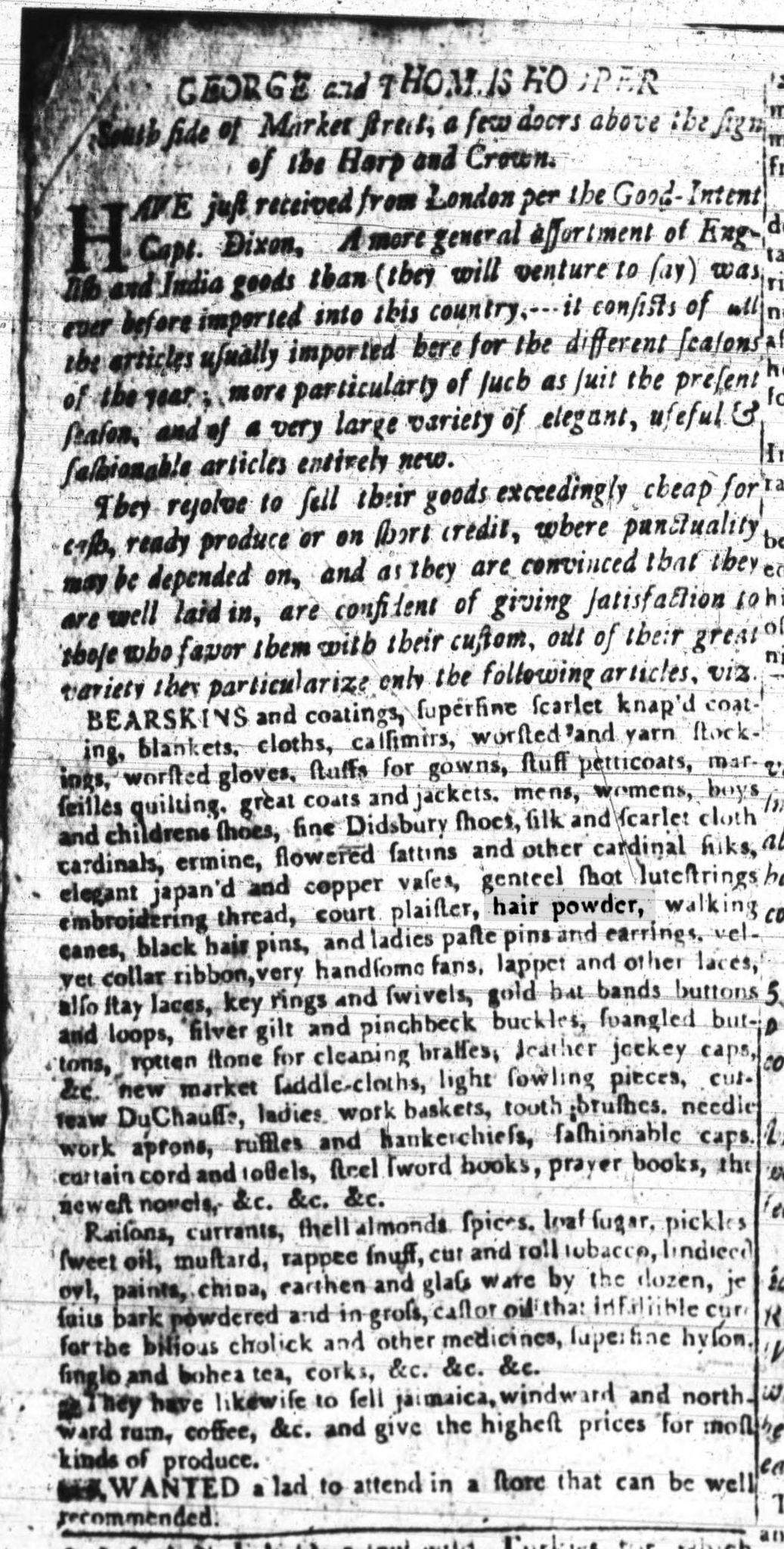
Wilmington merchants George and Thomas Hooper sold hair powder in their Market Street store. (Cape Fear Mercury, December 29, 1773). Their brother William Hooper was one of North Carolina’s three signers of the Declaration on Independence.
A Relic of the
Powdered Wig Era
in Old Wilmington
Quite often in the Public Archaeology Corps’ dig on Quince Alley in downtown Wilmington, we find an unusual and surprising artifact. And so it was with a piece, made of pipe clay, that turned out to be half of a wig curler. This artifact links us with the fashions and styles of colonial Wilmington, as well as the wider world of Europe and its American colonies.
King Louis XIV of France (reigned 1643-1715), whose court at Versailles set styles for aristocrats all over Europe, started wearing wigs when his own hair began thinning. The future Charles II of England, then living in exile in France after the English Civil War, helped popularize wigs in Britain when he was restored to the throne.
The French word for wig, perruque, was spelled “peruke” by the English. That was altered into “perwyck” and then to “periwig”, which was shortened into “wig”. Sometimes a peruke was a particular kind of wig, with long hair down the back and the sides, but colonial Americans used wig and peruke interchangeably.
Louis XIV-era wigs were usually made of human hair, and appeared in natural colors. By 1700, it became fashionable to coat them with white hair powder.
In the Thirteen Colonies, wigs were most often worn by upper-class or professional men. That said, some artisans and indentured servants wore wigs, and some aristocrats provided them for their slaves. American women were more likely to wear hair extensions instead of full wigs. Many men wore an artificial queue, resembling a pigtail that matched their own hair color. Most colonial Americans never bothered with wigs at all, or wore them only on special occasions.
Who did our wig curler fragment belong to? Some middle or upper-class households cleaned and maintained their own wigs, and owned numerous ceramic curlers. There were also shops that made and cleaned wigs.
Colonial Wilmington had a firm of “peruke makers” as early as 1766, according to an advertisement in the North Carolina Gazette. The peruke makers, the firm of Roukes and Chaldwell, occupied a building close to our dig site, on the northwest corner of Quince Alley and Front Street. The owners, John Roukes (also spelled “Rooks) and John Chaldwell (also spelled “Cholwell”) also obtained license to run an ordinary (tavern) in 1769.
Shops such as Roukes and Chaldwell’s sold ready-made as well as custom-made wigs. They measured the customer’s head, and picked out one of a selection of wooden blockheads that that was closest to the customer’s head size.
The finest perukes were made of human hair, which was strengthened with a small proportion of horse hair. Hairs were boiled, cleaned, and sorted by length, and then were woven together onto a base of silk threads. Wearers often shaved their heads or cut their own hair very short, to the wigs would stay on better.
Ceramic wig curlers were made of unglazed pipe clay. Some were simply straight rods, but most were rolled out to be larger at the ends and narrowed in the middle. Archaeologists often find them broken in half, as was our example. To curl the hair in a wig, it was wrapped around and clamped to the curler, then boiled for three hours or so. Then, the hair was dried and wrapped in brown paper and baked in an oven. Sometimes the paper-wrapped curls were packed in a pastry crust for added protection before baking. Old wigs were occasionally cleaned and curled with the same treatment.
Wigs fell out of favor after the mid-1700s, although professionals such as clergymen and physicians kept wearing them for some time. Lawyers and judges in Great Britain and the British Empire and the Commonwealth also kept on wearing their traditional wigs. They are still worn in criminal trials by barristers (lawyers who practice in open court) and judges in the UK today.
Hair powder remained in use after wigs faded from everyday life. Many men pulled their long hair back into a queue and covered it with powder so that it resembled a powdered wig. Made of wheat starch, powder often was tinted with pastel colors. 1780s records of Port Brunswick (a customs district covering the Cape Fear River region that was based in Wilmington) shows several shipments of hair powder for local merchants. Some hair powder came to Wilmington from the French colony of Haiti, or the Spanish colony of Santo Domingo, in the Caribbean.
The British Army required soldiers to grease and powder their hair. Each soldier used about one pound of hair powder every week. Powdering a wig or one’s own hair was a messy and troublesome chore. Hair was greased with pomatum, a sticky mixture of lard or suet tinged with cloves, orange oil, or other scents. Powder was sifted onto the hair, or blown on with a small bellows. A cone-shaped paper mask kept hair powder out of eyes and noses. To keep clothing clean, one wore a cloak that looked something like a modern barber’s cloth, or even a “powdering gown”.
An interesting reference to allergies came up at the October 1787 term of the New Hanover County Court: “Thomas Lamb, having it made it appear to the court that he could not bear the smell of hair-powder, flour, or wheat, it is ordered that he be exempted from attending as a juror …”
Europe and the early United States took their fashion cues from France. After the French Revolution began in 1789, French fashion was plainer and simpler than the fancy clothing and hairstyles of the despised regime of Louis XVI. The French stopped using hair powder, and a great many of the British and the Americans followed their lead. A British tax on hair powder, to pay for their war with Revolutionary France, also led many users to give it up.
1
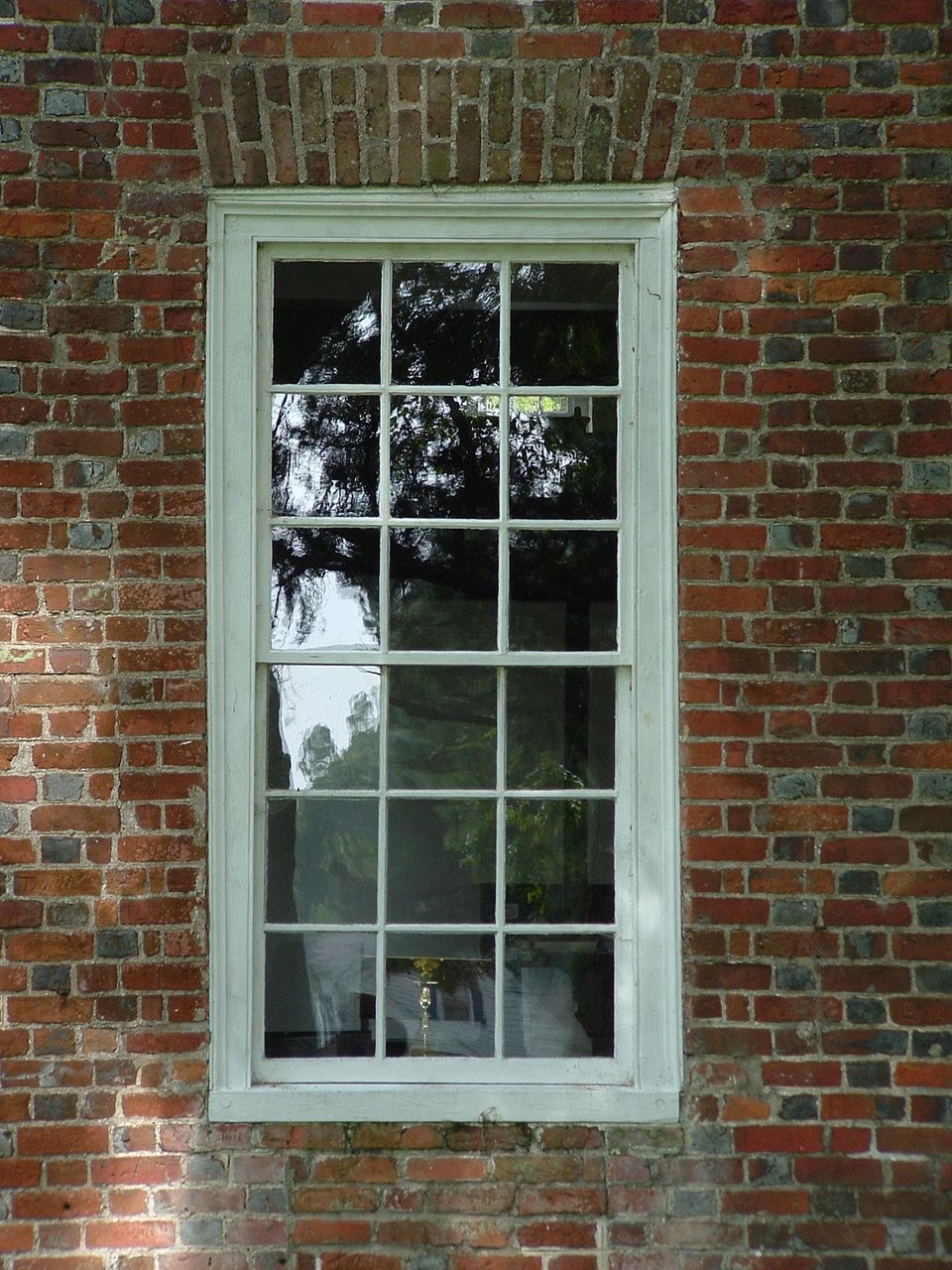
18th century window glass at St. Thomas’ Church (1734) in Bath, North Carolina.
2
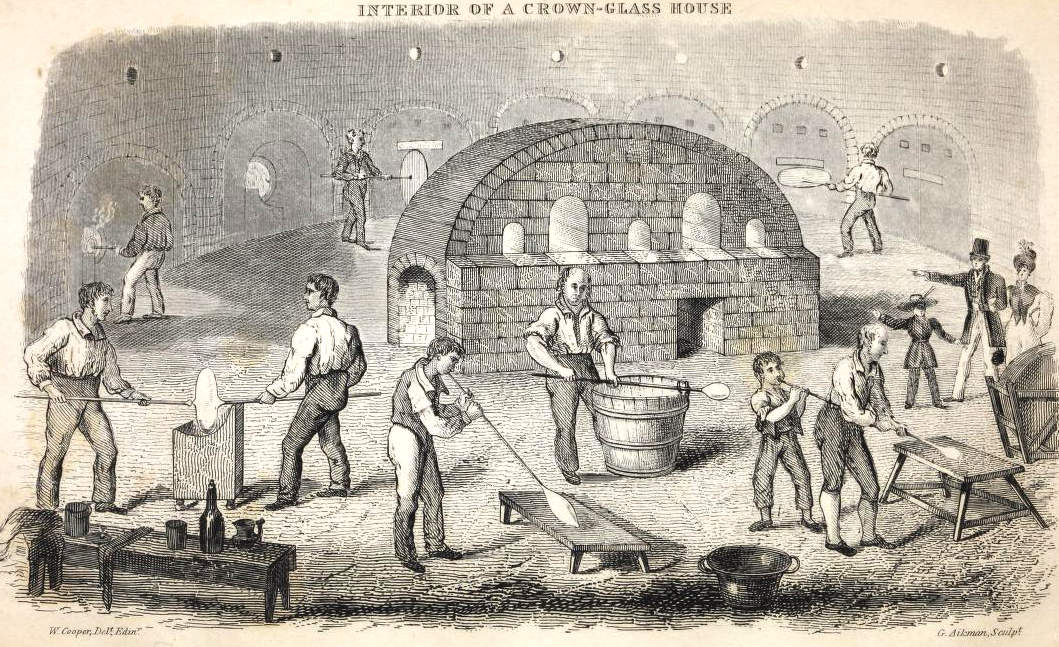
Glass workers making crown glass. (William Cooper, The Crown Glass Cutter and Glazier’s Manual. Edinburgh, 1835.)
3
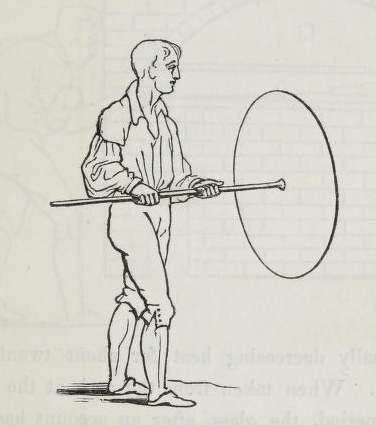
A glassmaker spun semi-molten crown glass into a flat “table” up to five feet wide. (“The Crown Glass Cutter”).
4
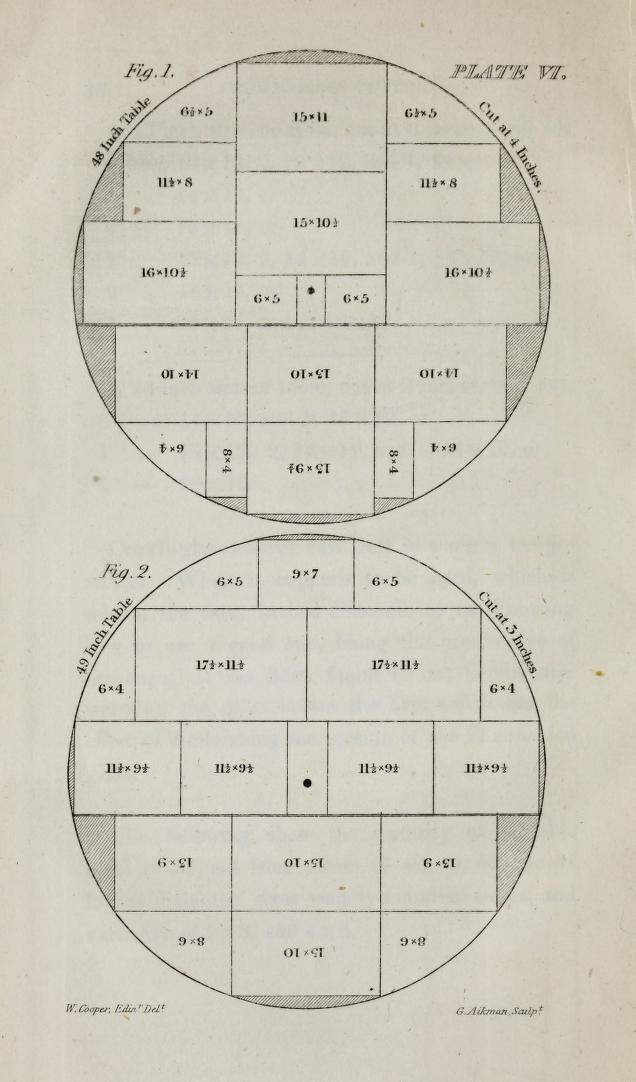
Patterns for efficiently cutting a table of crown glass. (“The Crown Glass Cutter”)
5
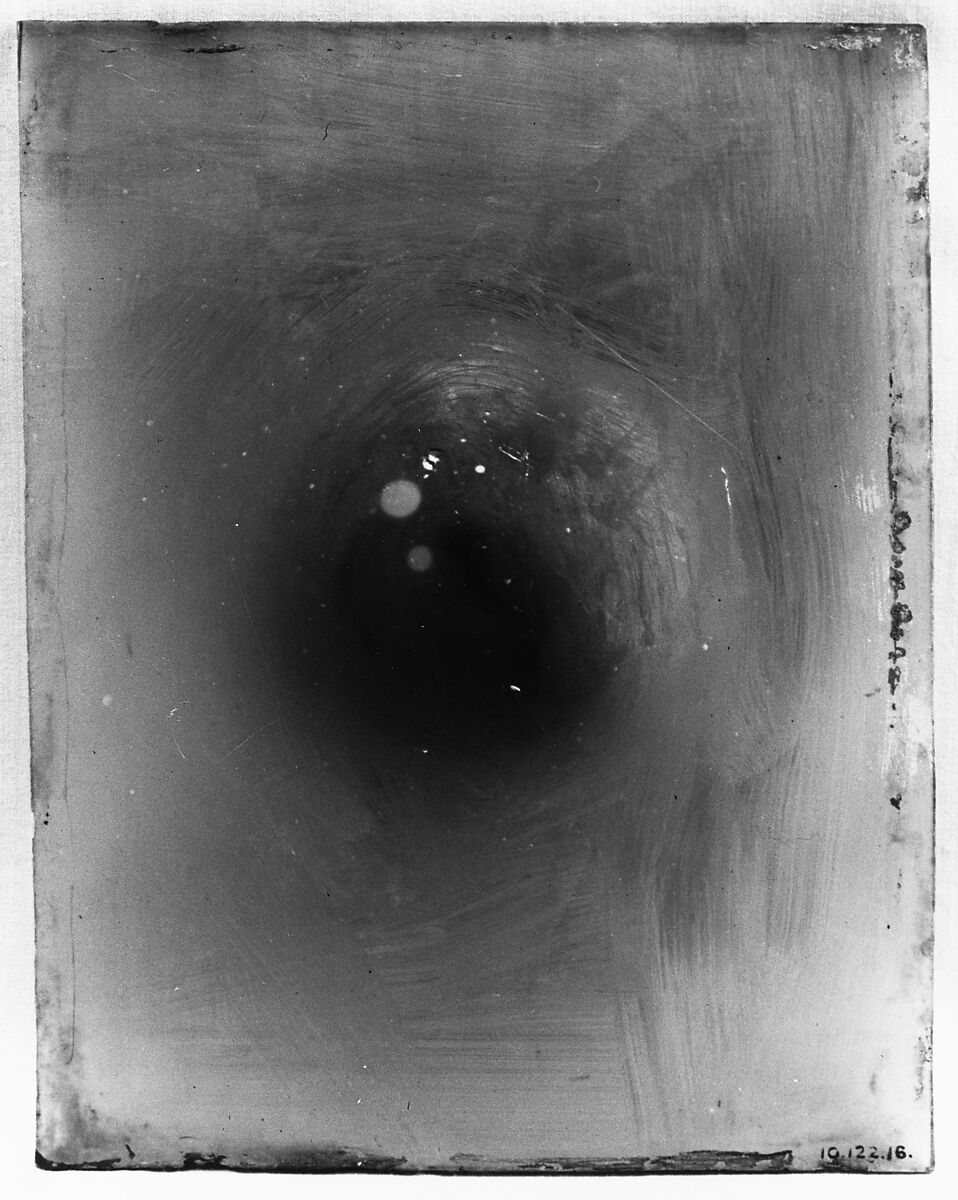
A “bull’s eye” from a pane of crown glass in the collection of the Metropolitan Museum of Art, New York City.
6
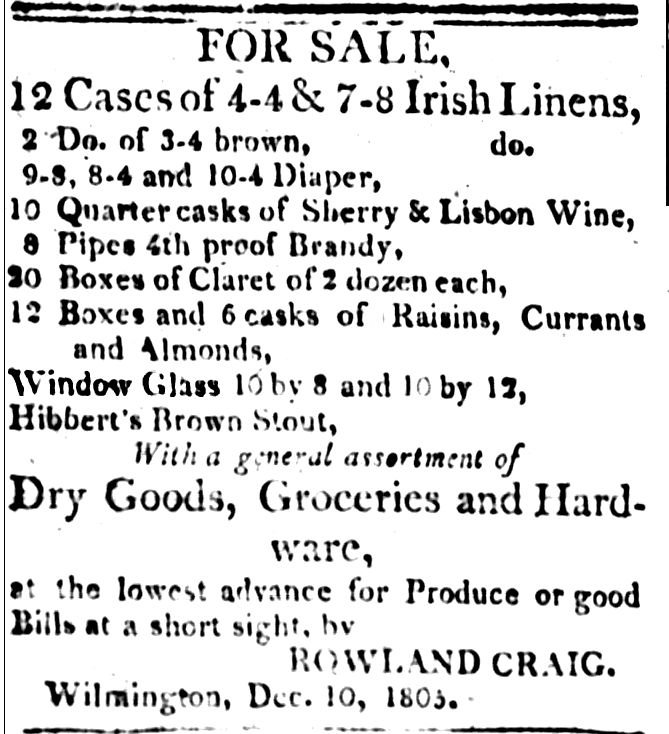
An ad mentioning window glass for sale in Wilmington. (Wilmington Gazette, December 10, 1805, from North Carolina Newspapers.)
A Look at the
Window Glass
in Quince Alley
Our finds at the Public Archaeology Corps’ dig on Quince Alley in downtown Wilmington include a great variety of glass shards. Glass in the 18th and early 19th century was created by highly skilled glassmakers, who shaped molten glass by blowing air into it through long metal tubes, and rotating or spinning it. Besides fragments of hand-blown bottles, there is an abundant supply of shattered bits of flat glass from broken window panes. There were a few different methods of making window glass in the 18th century, but the finest quality and most popular type was created by the crown glass process.
An earlier method, broad sheet glass, was made by blowing a large glass bubble. Then, the ends were trimmed and the bubble cut and laid flat. Heated and crafted in a furnace, it would flatten out into acceptable window glass. Later in the 1700s, a variation called cylinder glass was developed, in which the glass was cut and shaped after being blown into a long cylindrical shape rather than a more rounded bubble.
A glassmaker started a sheet of crown glass by blowing a hollow ball or “crown” with the metal blowpipe. Then, a pontil (a solid metal tube) was attached to the crown and the pipe was removed. The glassmaker spun the pontil, and when necessary reheated the glass in a furnace to soften it. Spinning the pontil created enough centrifugal force to make the semi-molten glass spread out into a large, flat disk (called a “table”) as much as five feet across. When the glass cooled, it was cut into rectangular window panes, with the remaining scraps cut for other uses.
Crown glass was not perfect. Air bubbles, waves, and wobbles gave the glass “character” if not uniformity. Thickness varied somewhat from fine, thin glass in the outer areas of the disk, to gradually thicker glass toward the center. The very center formed a “bullseye”, with glass as much as one inch thick forming a circular blob in the middle, where the pontil was attached.
Today, bullseye panes are much prized for their distinctively quaint and archaic look. But, 18th century customers found little charm in the thick distorted bullseye panes, which let in less light and were impossible to see clearly through. Builders used some of them in out-of-the-way places such as windows for stables, or transom glass set high over a door. But, the bull’s eye panes were so hard to sell that many glassmakers just tossed them into the furnace to melt them down.
It required complicated math to get the most efficient use of a large circle of glass. Manuals for glassmakers included diagrams with precise measurements to get the largest number of large panes and the least waste.
The Port Brunswick Records (placed online by the North Carolina State Archives) list some shipments of window glass to Wilmington in the 1780s. From New York, on August 25, 1789 the sloop Millia brought for John Burgwin (the merchant who once owned the Burgwin-Wright House at Third and Market Streets in Wilmington) “2 Boxes Window Glass 10 x 12”.
On November 25, 1789, the schooner Wilmington Packet arrived from Charleston with a large cargo including, for merchant John Huske, “1 Box Window Glass – 10 by 12 – 100 ft.”. What is apparently the retail value (4 pounds; 7 shillings; and 8 pence) follows. At that price, the cost was about 10 ½ pence per foot.
Glass was not always cut into panes for shipment. Some crown glass was packed into crates as whole, half, or quarter tables, to be cut later as needed.
It was theoretically possible to mount a half or even a whole table of glass into a special window. Thomas Jefferson ordered several whole tables, about four feet in diameter, for Monticello. The glass was to fit in the oculus, a round window on the roof of his self-designed home. Every one of the great pieces of glass was broken in transit. Jefferson gave up and had a window of smaller panes made for the space. At last, in 1989, restoration crews working at Monticello lowered a hand-blown, 48-inch diameter crown glass table into the space at the top of the dome. Jefferson’s vision was accomplished about two centuries after he came up with the idea.
Usually in our dig when we find window glass, it’s in such tiny pieces that it’s difficult to tell which process was used. But, whether crown, broad sheet, or cylinder glass, the fragments are a reminder of the craftsmanship of skilled glassblowers, and the trade networks that brought their products by ship to Wilmington.
1
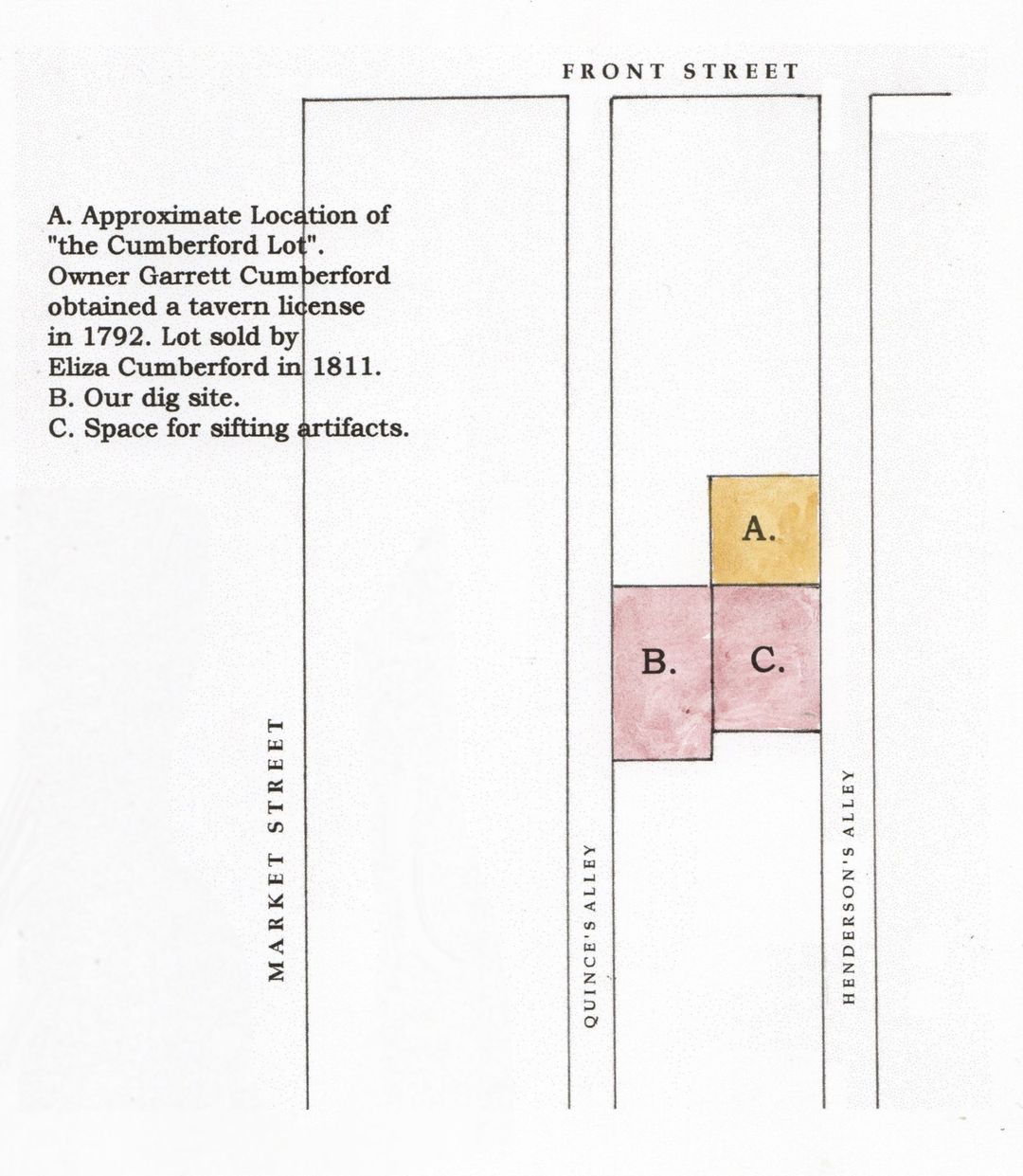
Approximate location of “the Cumberford Lot”, the probable site of a short-lived 1790s tavern.
2

Garret Cumberford’s estate inventory, 1793. It noted the house that stood on Henderson’s Alley near our dig site.
The Cumberford Lot
Henderson’s Alley was a popular spot for taverns and bars in Old Wilmington. Among the 18thand 19th century bar owners along the alley was Garret Cumberford, who received a tavern license from the New Hanover County Court on November 19, 1792. The only real estate in his name was a house and lot on the north side of Henderson’s Alley, purchased on May 1793 for £161. So it seems likely that he kept the tavern in his house. The tavern was in business for only a short time. Cumberford died later that year and his estate was handled in November 1793 by the county court. Much later, in March 1797, the county court appointed John Telfair as guardian of the Cumberford children.
Cumberford’s widow filed an inventory of her husband’s estate, including “one puncheon of Jamaica Spiritts Value Abt. £80” and a puncheon of “Northward Rum” valued at £45. A puncheon was a large barrel, holding 84 gallons. Northward rum was made in New England, rather than Jamaica and the other Caribbean islands.
There were also two tierces of rice and four barrels of flour; and one hundredweight of tobacco. (A hundredweight was 8 stone, or 112 pounds.) All of these goods of course had a place in a tavern selling food and drink.
Also in Cumberford’s estate were quantities of goods one might find in a small shop: 4 pieces of linen; 40 yards each of “Ozanbrigs” (osnaburg was a coarse fabric), flannel, and “checks”; one dozen stockings; “Shawls Jackett patterns & Callicoes”; and two pieces of muslin. There were also £3 worth of hardware and £2 worth of thread; “1 Rhem Writing paper & Earthenware”, worth £4; and £12 worth of “Bees Wax & Myrtlewax”. (A fragrant candle wax can be extracted from wax myrtles, small shrubs and trees that grow in our region.)
Cumberford’s house on Henderson’s Alley was valued at £200. He also owned a boat worth £50; £30 worth of household furniture; and carpenter’s tools valued at £10. The inventory was drawn up by Cumberford’s widow, who was not named.
Alas, the Cumberfords apparently left few other traces in the written records. No one else by the name of Cumberford renewed Garrett’s tavern license, indicating that this tavern closed after his death.
The property, which was for years afterward called “the Cumberford Lot”, was sold by “Eliza Cumberford of Chatham County” to John Larkins in 1811. We don’t know whether Eliza was the widow, daughter, or other relative of Garret Cumberford. Larkins paid $280 for the property, indicating that there was a house on it. It was almost certainly a fairly new house, as the area was devastated by fire in 1798. Deeds indicate that the lot measured 25 ½ feet along Henderson’s Alley and was 28 feet deep, including a 4 ½-foot easement in the alley. From comparing deeds of neighboring properties, we find that western edge of “the Cumberford Lot” came up against what is now the eastern wall of the roofless c.1850 brick warehouse ruins where we have our sifters set up for our excavation. So, long ago, the Cumberfords would have been the next-door neighbors of anyone who lived on our dig site.
1
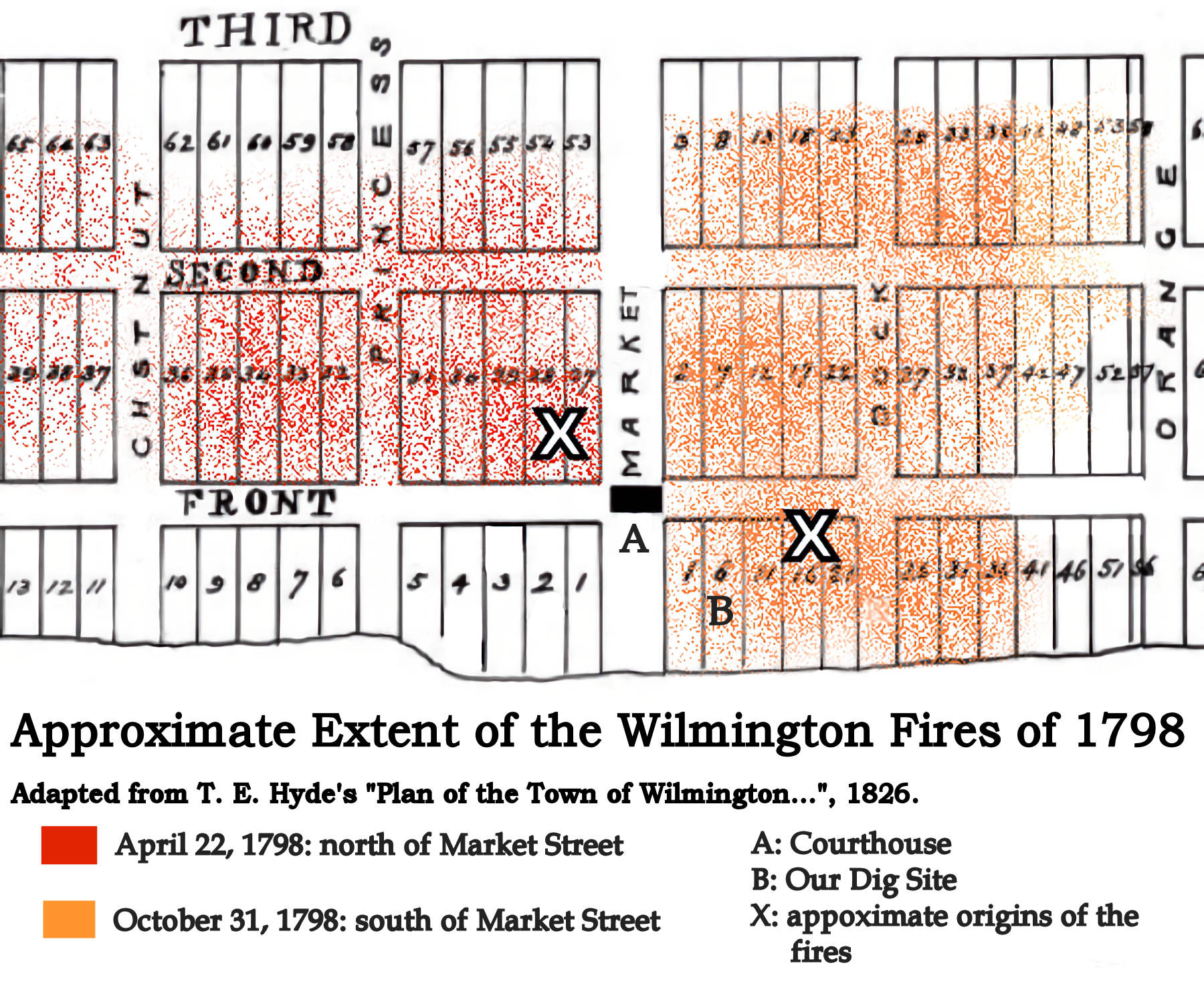
Approximate Extent of the Wilmington Fires of 1798.
2
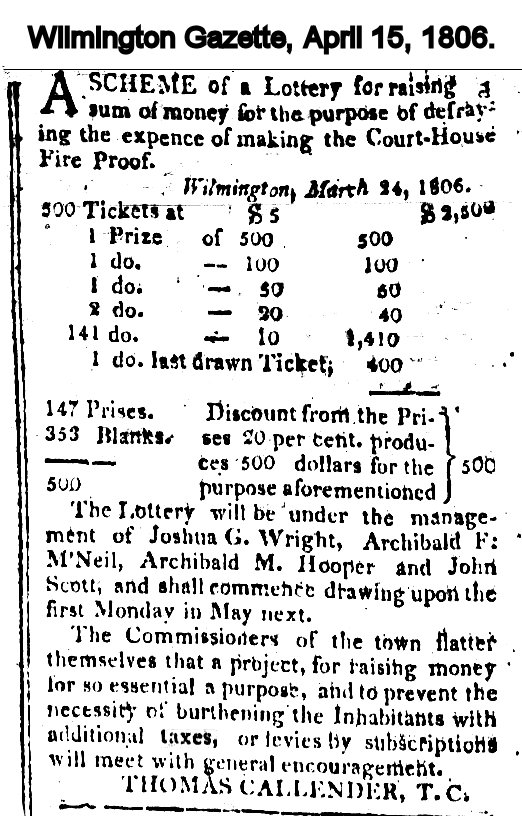
Wilmington Gazette, April 15, 1806
Two Major Fires in 1798 (to be continued)
Wilmington suffered two major fires in 1798. This map shows my best estimate of the affected areas, after sifting for information from newspaper items and deed records. Apparently each fire was confined to one side of Market Street. So, it was the October 31 fire that affected the site of our dig.
The county courthouse stood atop brick pillars, right in the middle of the intersection of Front and Market Streets. Frantic efforts saved the courthouse from destruction in either of the 1798 fires.
In 1806, a lottery was organized to finance the fireproofing of the courthouse. In the end, though, the courthouse was destroyed by a fire in 1840.
Archibald F. McNeill, one of the commissioners of the courthouse lottery, married Ann Quince. She was the daughter of John and Mary Quince, who once owned the land we’re digging in.
I’m working on a more detailed look at the fires of 1798, which will appear on the Public Archaeology Corps web site soon.
1
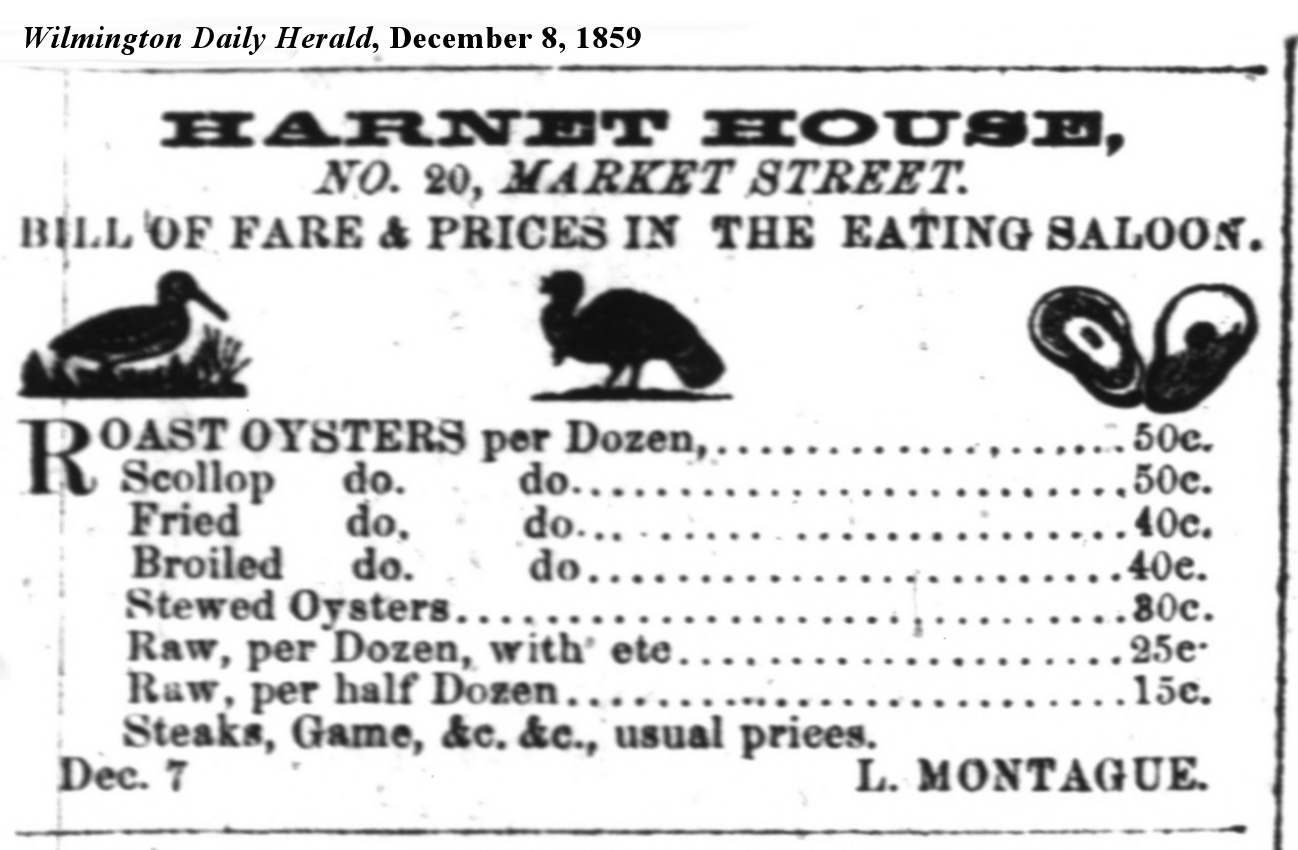
Wilmington Daily Herald, December 8, 1859
2
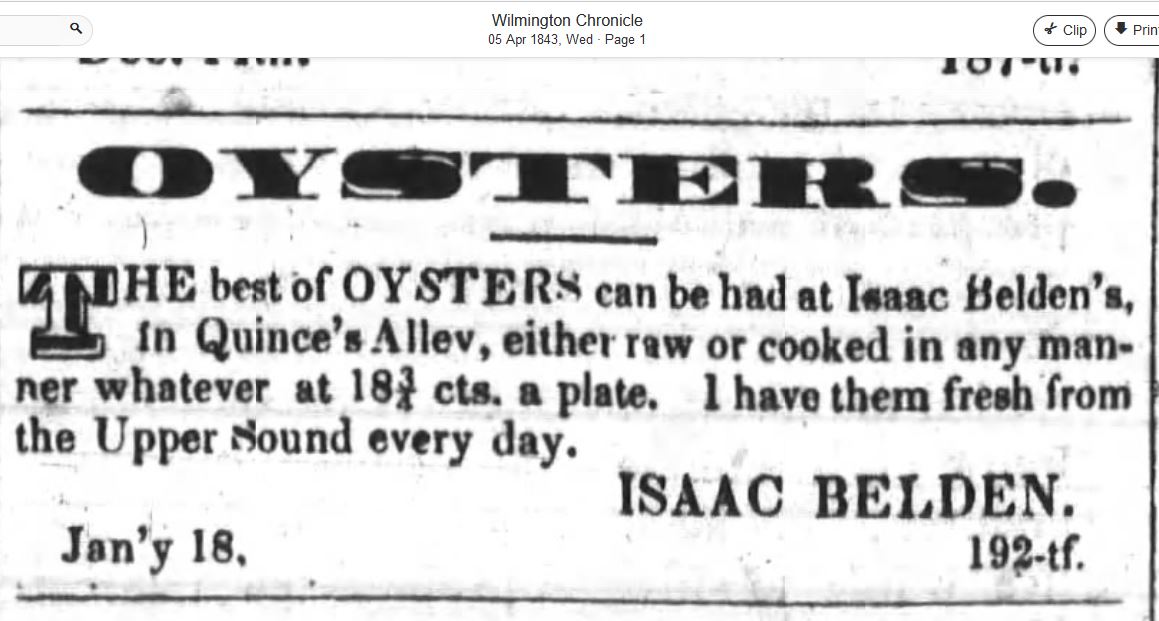
Advertisement for Oysters
The Oysters of Quince’s Alley
Quince’s Alley near Front Street has turned up oyster shells. We know that Isaac Belden opened an oyster house on Quince’s Alley in 1842. Belden stayed in business there until the Wilmington fire of 1845, which destroyed nearly the whole block. It’s also known that James Jennett ran a tavern on Quince’s Alley in the 1790s. Jennett and any earlier tavern owners might well have also served oysters that we found a couple of centuries or so later.
Isaac Belden had quite a bit of competition in the oyster business. Oysters were sold at Brigg’s Carolina Coffee House on Front Street. Daniel Miller’s bar room also sold oysters. Miller’s bar was just a stone’s throw away from Belden, being located on Henderson’s Alley just a bit closer to the river than our dig site. Miller had closed up shop by 1844, as a newspaper ad offered his old place for rent.
S. Ghio’s tobacco and fruit shop, which opened in 1844, sold pickled oysters from the James River in Virginia. By 1845, the firm of Foster & Tilly advertised oysters that came by train from Norfolk, Virginia.
Belden advertised in 1843 that he had oysters “fresh from the Upper Sound every day”, which he sold for 18 ¾ cents a plate. If you followed Market Street out of town, you’d soon be on the old main road that more or less followed the route of modern U.S. 17, getting within a couple of miles or so from the sounds behind Wrightsville Beach, Figure Eight Island, and Topsail Island. Oysters can live for days out of the water, so they’d easily survive a cart trip down to Wilmington.
All North Carolina (and East Coast) oysters are of one species, Crassostrea virginica, or the Eastern Oyster. That said, there is great variation in the Eastern Oyster, depending on the depth, salinity, and other variations of the waters they grow in.
The shallow sounds of New Hanover County had many places where one could find “raccoon oysters”. They were notably smaller than those dredged (with more difficult labor) in deeper waters. Raccoons were able to head out at low tide to get these little oysters, hence their name. In 1916 the Morning Star explained that raccoon oysters “cannot be shipped to outside points profitably, as they are very hard to open unless steamed or roasted. It is estimated that the ordinary oyster opener in the larger cities could open three Norfolk oysters while he was opening one of the ‘Raccoon’ variety.”
Judging by prices, Wilmingtonians preferred oysters from beyond New Hanover County’s waters. For instance, the price in April 1876 was $2 for a bushel of New River oysters from Onslow County, and 75 cents for a bushel of oysters from Myrtle Grove Sound.
Many of Wilmington’s saloons and hotel dining rooms offered fresh oysters along with their selections of liquor, wine, and beer. In 1859, the Harnet House on Market Street sold oysters roasted, “scollop” (baked with bread or cracker crumbs, butter, cream, and various other ingredients), fried, broiled, or stewed.
Oysters were most flavorful in the cooler months, giving rise to the custom of eating them only “in months with an ‘r’”; that is, from September to April. Belden’s first newspaper ads for his oyster house came in November 1842, and continued until May 10, 1843. On June 7, Belden advertised a new business for the warm season: a “bathing house where cold and warm baths can be had at all hours between sunrise and ten o’clock at night”. From that time on, Belden’s ads only mentioned the bathing house. His last advertisement appeared on September 5, 1845.
The final mention of Belden’s business was in a list of buildings lost in the great Wilmington fire of November 4, 1845. The fire broke out in Henderson’s Alley, “in a small shed-like wooden building, attached to a larger wooden building which had been formerly used as a bar-room, but for some weeks had not been occupied”. Quite possibly, this was Dan Miller’s old bar room.
Belden appeared on the list of business owners affected by the fire as “Isaac Belden – oyster house”. The same fire also destroyed the premises of two other known sellers of oysters in town: S. Ghio, and Foster & Tilley.
1
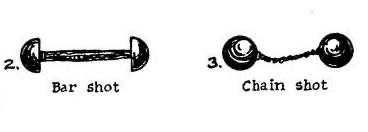
Bar shot and chain shot. Albert Mauncy, Artillery through the Ages: A Short Illustrated History of Cannon, Emphasizing Types used in America. (Washington, D.C.: United States Government Printing Office, 1949), p. 64.
2
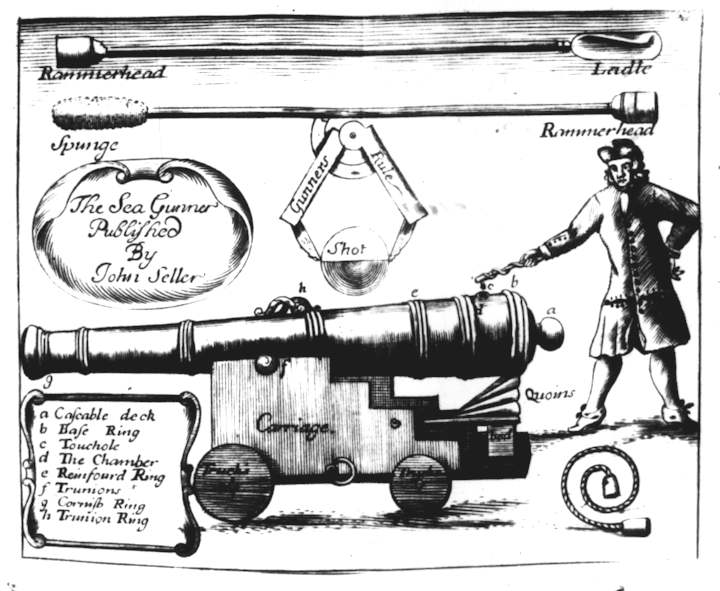
Bar shot was fired from standard cannons. John Seller, The Sea-Gunner Shewing the Practical Part of Gunnery as it is Used at Sea (London: 1691).
3

“Our” bar shot, found near Quince’s Alley.
4
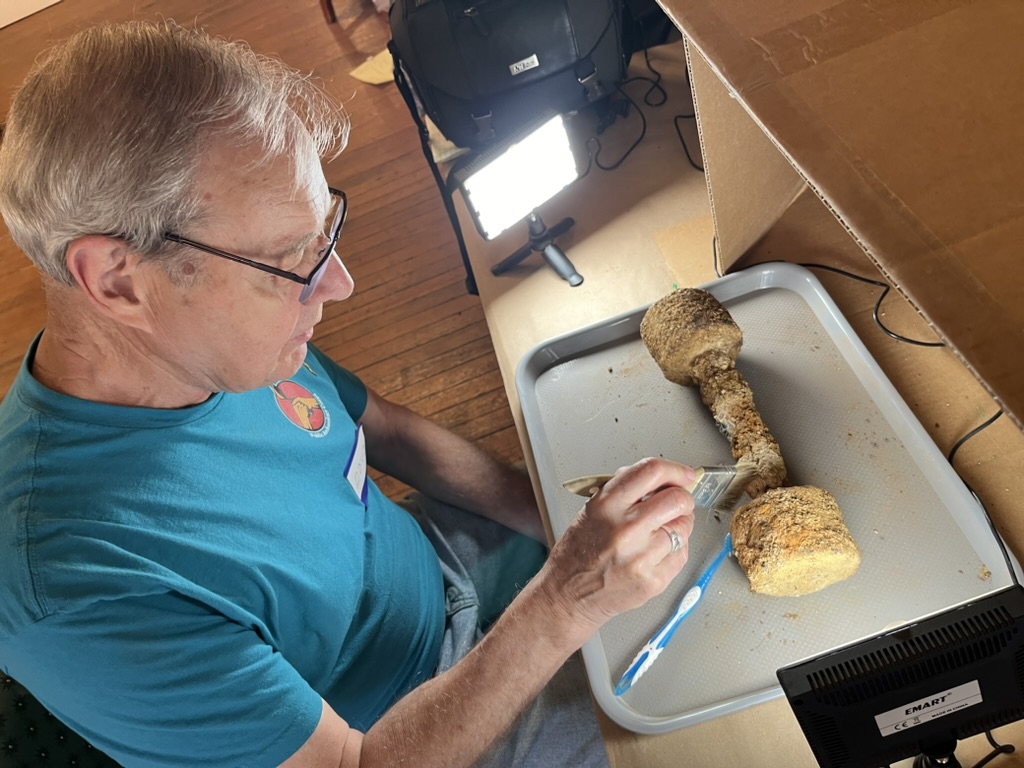
Douglas Dickinson working on the bar shot in our lab.
